パタン Patan のラトマチェンドラナート寺院 Rato Machhendranath Temple のすぐ近くに、ジェスタバーナ マハビハール ミンナート寺院 Jestha Varna Mahavihar Min Nath Temple (ミンナート寺院 Min Nath Temple)が在ります。 Lonely Planet による Minnath Temple の紹介は以下の文章です。
Lonely Planet による Minnath Temple の紹介は以下の文章です。
Just 200m south of I Baha Bahi, a large water tank marks the entrance to a courtyard strewn with wooden beams. In the centre is the brightly painted, two-tiered Minnath Temple, dedicated to the Bodhisattva Jatadhari Lokesvara, who is considered to be the little brother of Rato Machhendranath. The temple was founded in the Licchavi period (3rd to 9th centuries), but the multi-armed goddesses on the roof struts were added much later.
Note the metal pots and pans nailed to the temple rafters by devotees. The timbers surrounding the temple are assembled into a chariot every year to haul the statue of Minnath around town as part of the Rato Machhendranath Festival.
マチェンドラナート寺院との深い関わりがある様で、人々はマチェンドラナート寺院にお参りに行く前に、このミンナート寺院にお参りする様です。マチェンドラナート寺院とミンナート寺院の関係については、お祭り Rato Macchendranath Jatra の 山車 chariot についての説明に合わせて、The Himalayan Times の「 Readying for Rato Machhindranath Jatra」の記事で、
Many of us must have seen a small chariot near Machhindranath’s chariot. This is the chariot of Minnath — another deity. This deity is considered as Padmanityeshwor — a form of Shiva — a Hindu deity. We may have heard of the mythical relation between Minnath and Machhindranath as maternal uncle and nephew. However, Rabin Shakya, a priest at Minnath temples explains, “There is no such relation between these two deities. Machhindranath is the guest here who was brought to the country from Kamaru Kamakhya, India.”
との説明もあります。
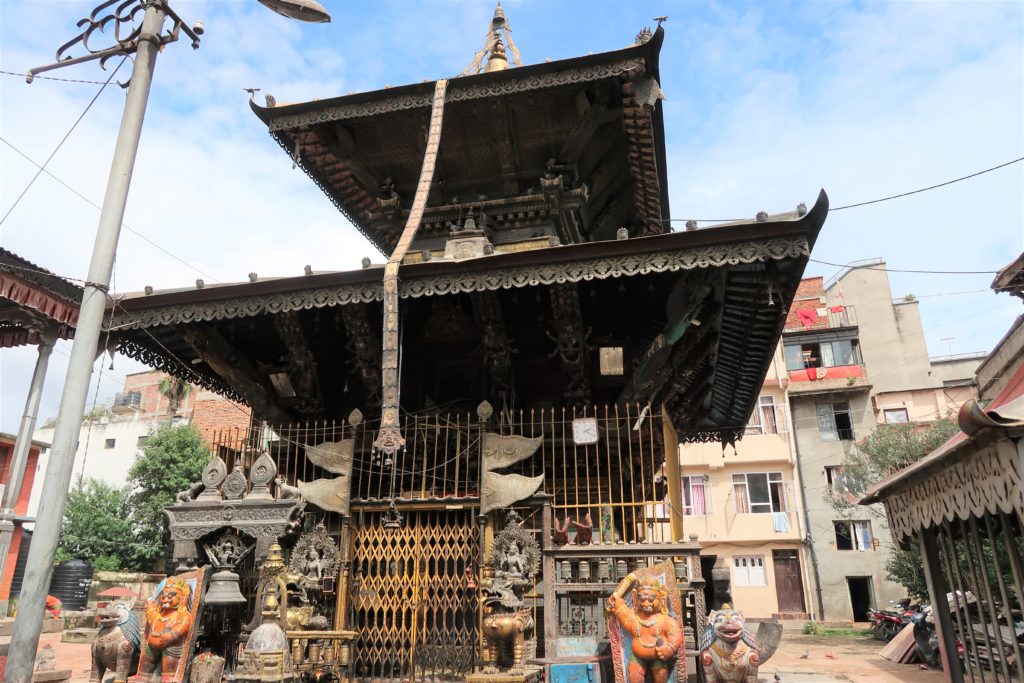 寺院としての建築様式も、カトマンズやパタンのマチェンドラナート寺院とよく似ています。ECS NEPALの「It All Starts with the Yantra」の記事で、類似点の記載を見つけることが出来ます。
寺院としての建築様式も、カトマンズやパタンのマチェンドラナート寺院とよく似ています。ECS NEPALの「It All Starts with the Yantra」の記事で、類似点の記載を見つけることが出来ます。
Both roof levels of the Matsyendranath Temple in Jana Bahal of Kathmandu have lovely kikkinmalas and one can observe figures of four powerful gods, Birudhaka, Dhritastra, Vaisravana and Viropaksha, at its four corners. Similar dominant figures can also be seen at some other temples such as the Min Nath Temple in Tangal, Patan, where two demonic figures stand guard at the front gate and two others at the temple entrance. This temple has copper sheeted roofs, as has the Matsyendranath Temple in Ta Bahal of Patan.
この記事は建築様式に関する詳細な記述が満載です。オーバーハングした屋根を支える Struts (Tundal トゥンダール 方丈)の彫刻について、どの位置の Strutsに何が彫られるかや、性的な彫刻の意味などにも言及しています。
One myth says that the erotic figures were carved to protect the temples from the wrath of a great puritan queen during the days of the Mahabharata War; another says that Hinduism’s most lusty god, Indra, will not let his bolt (bajra) strike places where there is something erotic (thus protecting such temples from lightning).
屋根の先端の Gajura ガジュラ(ガジュール)についての説明でも、ミンナート寺院が登場します。
Very heavy looking gajurs adorn the Min Nath and the Matsyendranath Temples of Patan.
Gajuraから垂れ下がるPataka パタカ(Dhvaju ドバジャ)の項目でも、再度ミンナート寺院が取り上げられています。
The pataka (dhvaju) is mostly made of gold, silver or copper and the eight auspicious symbols (asta mangala: endless knot, lotus, banner, wheel, holy water jug, pair of fish, parasol and conch shell) are popularly used as its design. They are supposed to be pathways for gods to descend down to earth. The intricately designed patakas of Ratnakar Mahavihara and Min Nath Temples in Patan are very impressive.
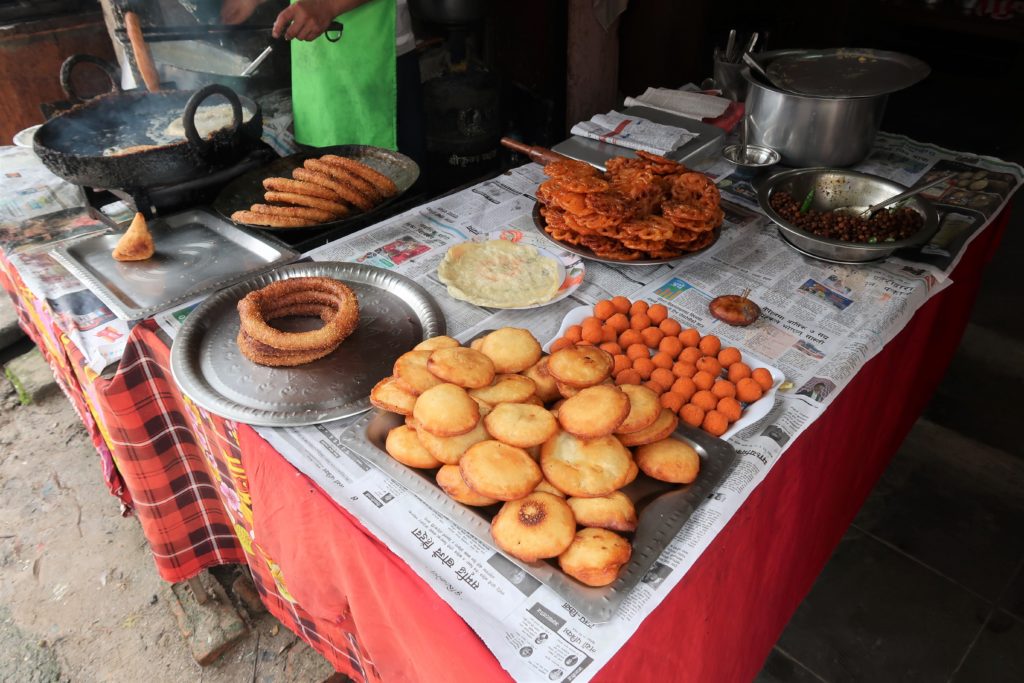 境内も小さな寺院です。
境内も小さな寺院です。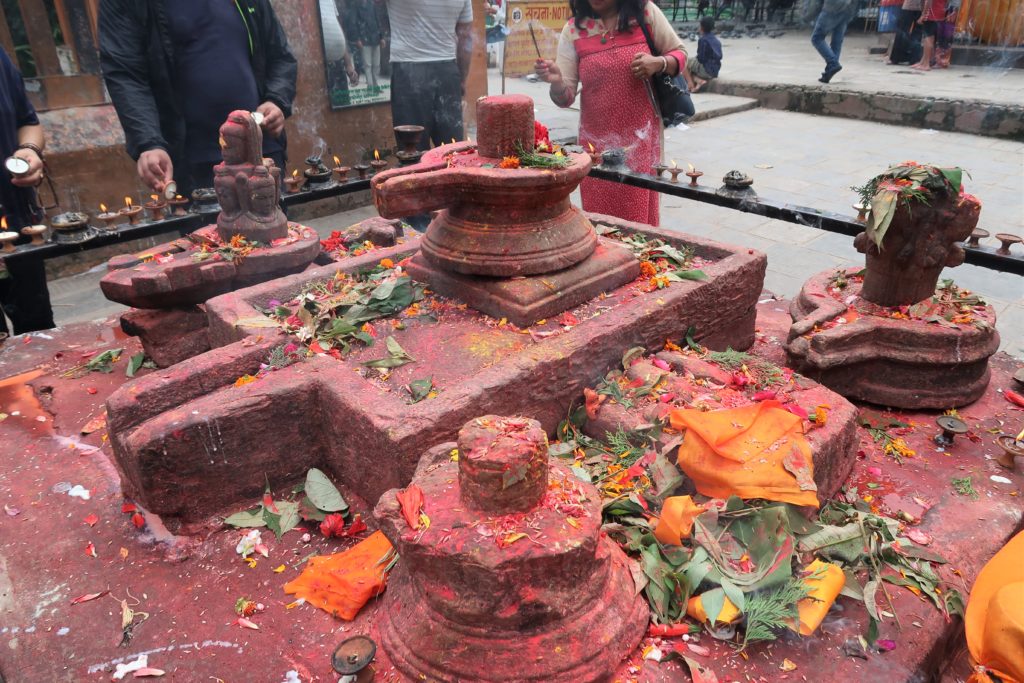 池の中に横たわる、5メートルもあるネパールで最大の石彫のヴィシュヌ神が祀られています。
池の中に横たわる、5メートルもあるネパールで最大の石彫のヴィシュヌ神が祀られています。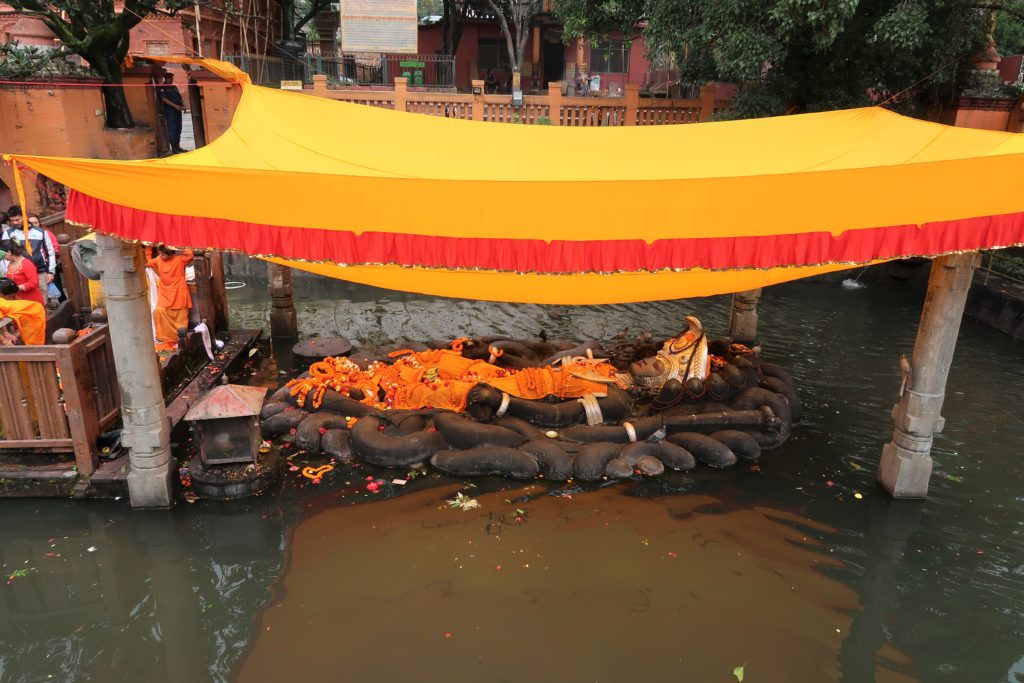


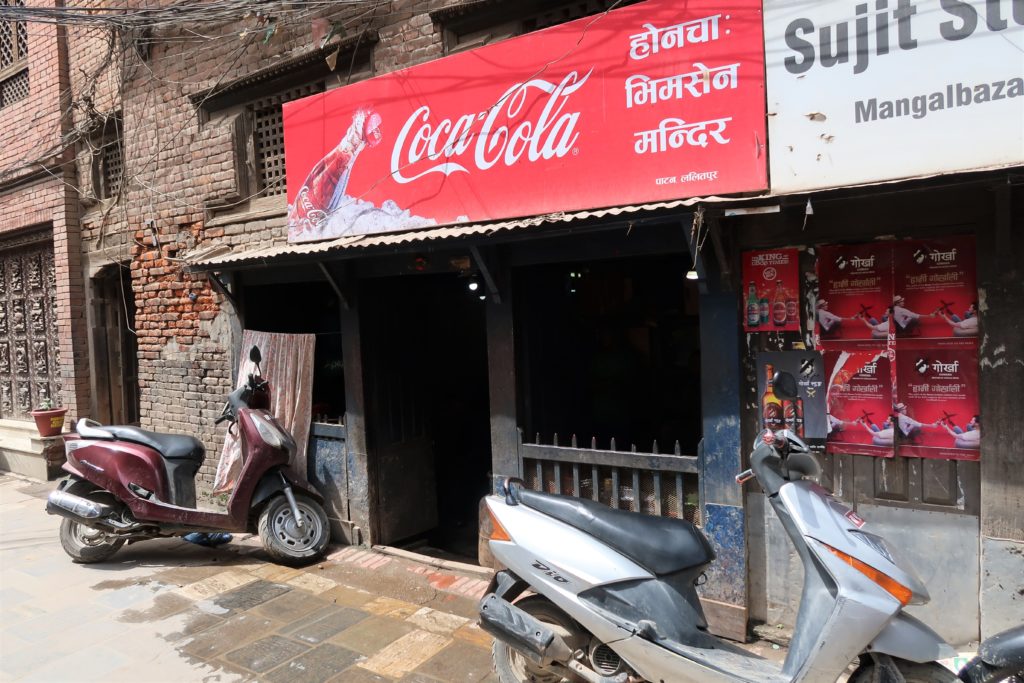
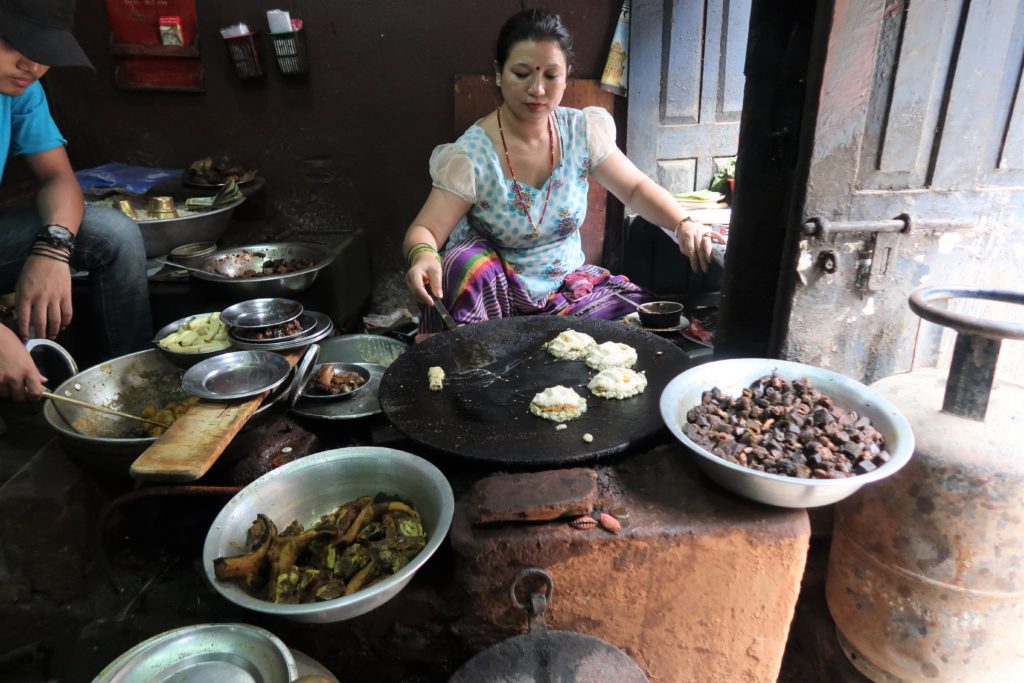 まずはバフチョイラ Buff Chowela (Chhoila) や、
まずはバフチョイラ Buff Chowela (Chhoila) や、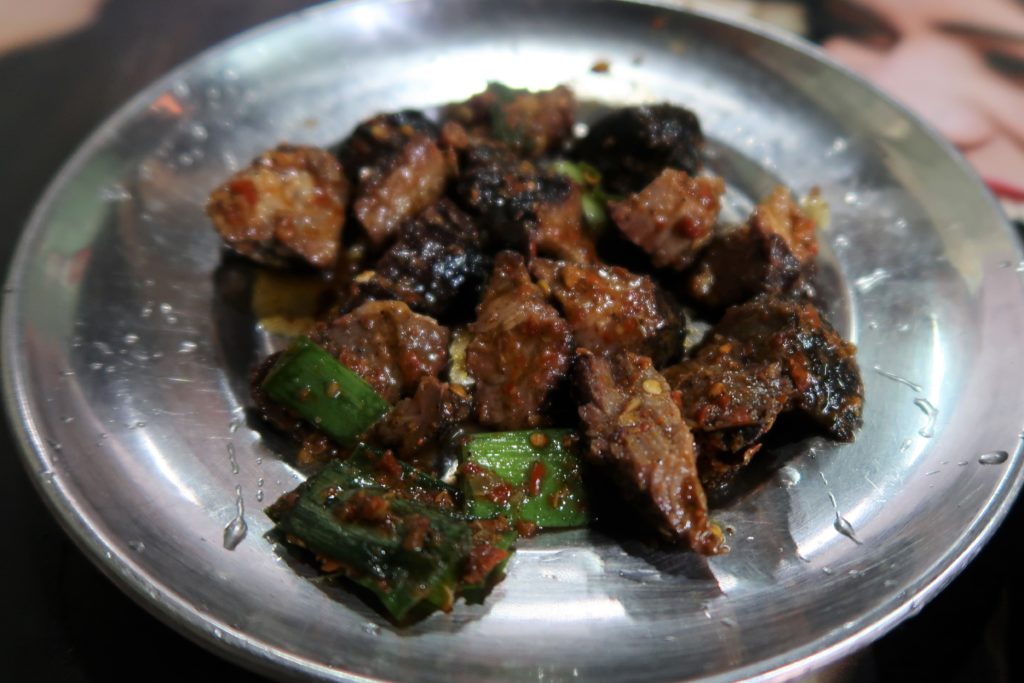 ブトン Bhuttan をお願いし、
ブトン Bhuttan をお願いし、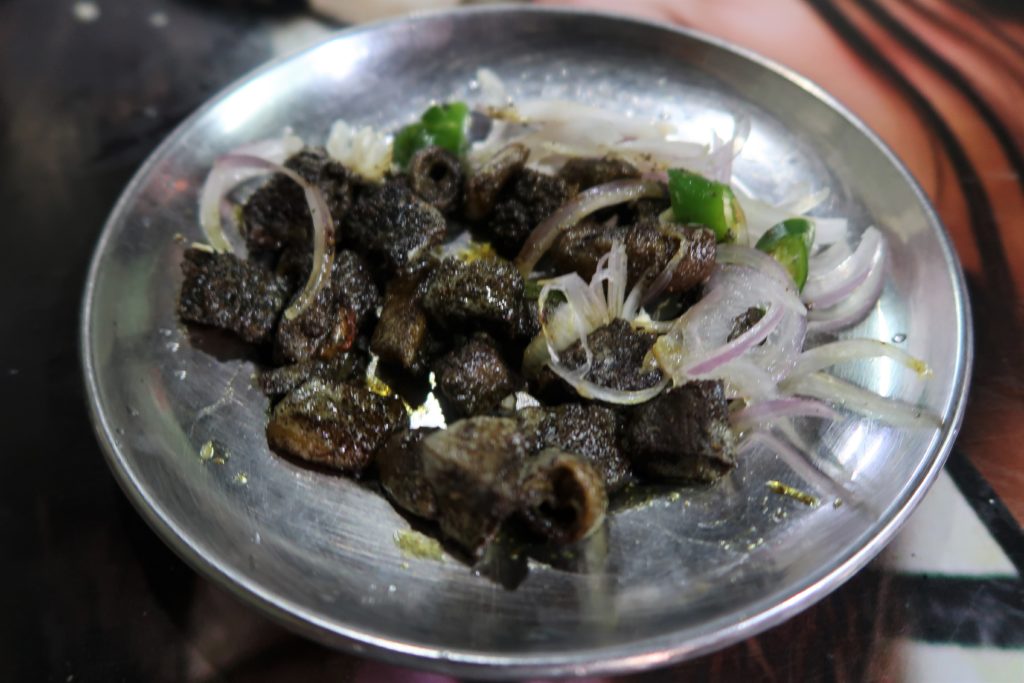 チウラ Chiura と一緒に頂きます。
チウラ Chiura と一緒に頂きます。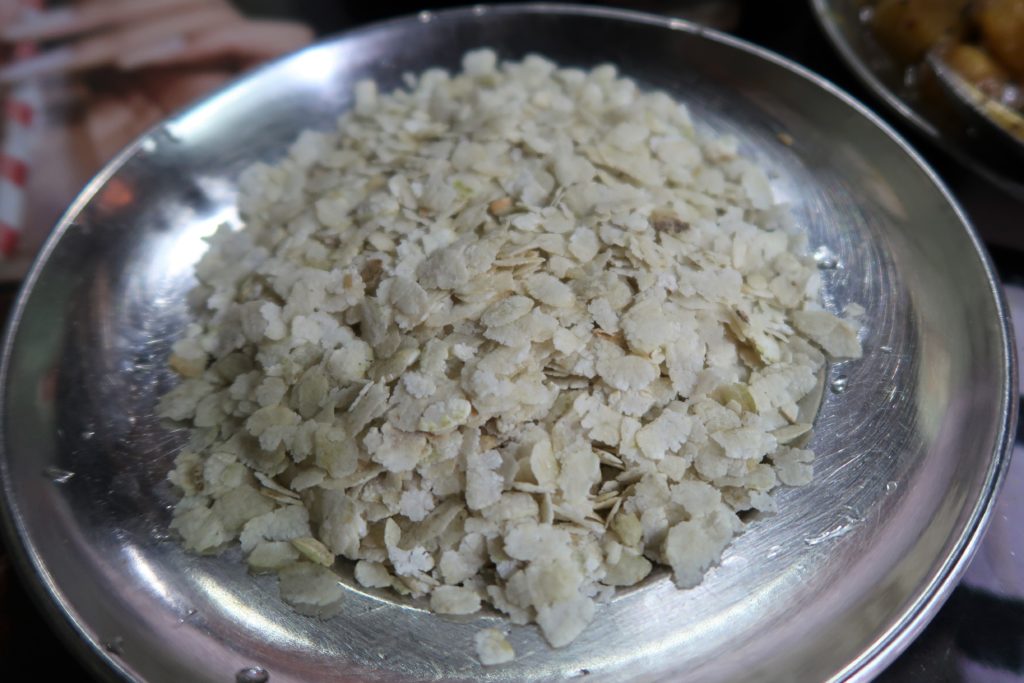 このお店名物の ピロアル― Piro Aalu を口にすると、まずじゃが芋の甘さを感じ、暫くすると辛味が広がり残る一品です。
このお店名物の ピロアル― Piro Aalu を口にすると、まずじゃが芋の甘さを感じ、暫くすると辛味が広がり残る一品です。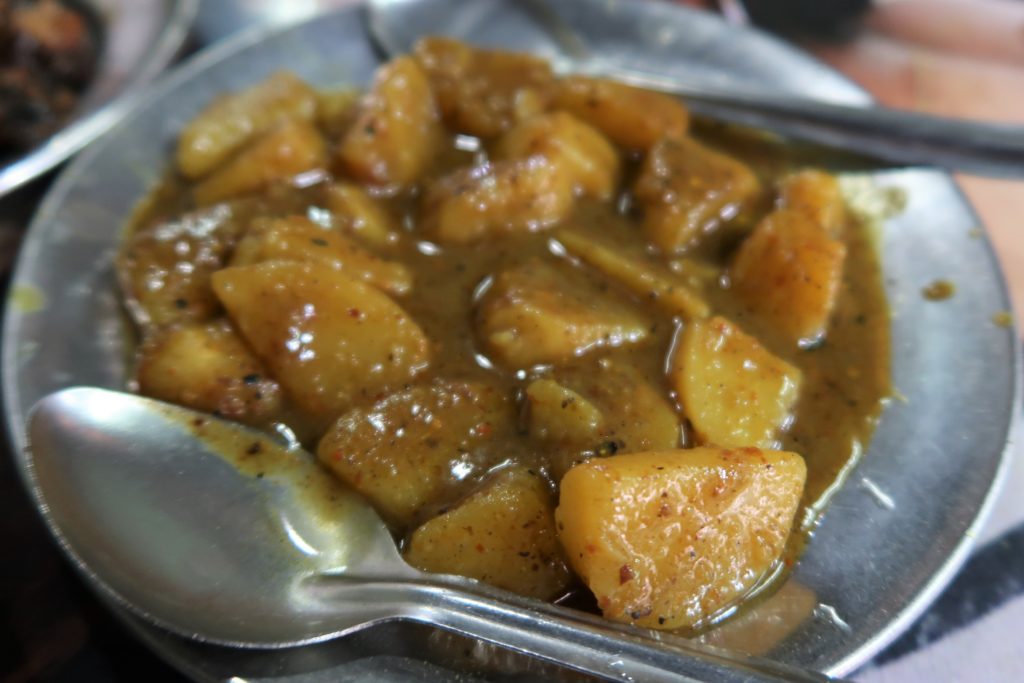 そのうちに、お願いしたウォー Wo (バラ Bara)も焼きあがってきます。
そのうちに、お願いしたウォー Wo (バラ Bara)も焼きあがってきます。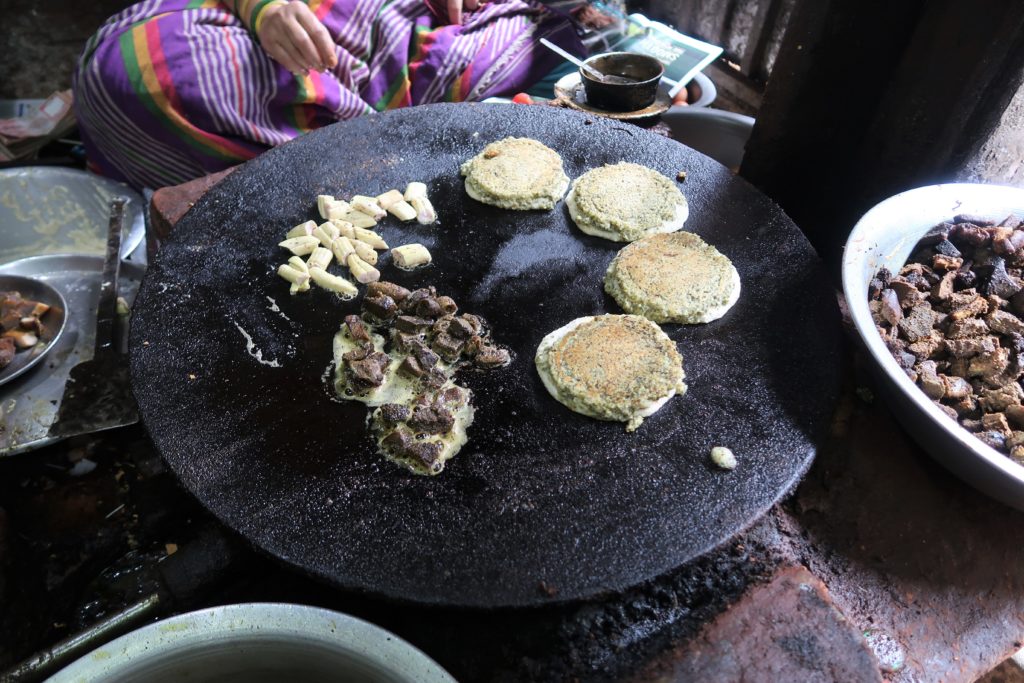
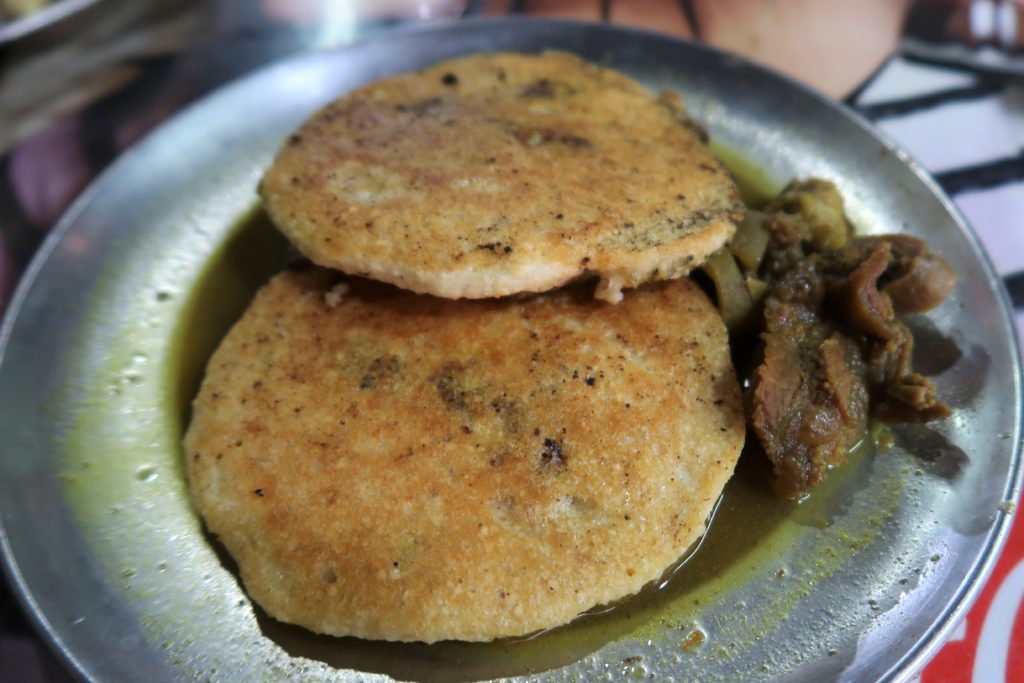 全部頂いていくと、結構、食べ応えのある量です。バラの横で焼かれていたティシャ Tisya は円筒状の脊髄を切ったものです。初めて頂きました。
全部頂いていくと、結構、食べ応えのある量です。バラの横で焼かれていたティシャ Tisya は円筒状の脊髄を切ったものです。初めて頂きました。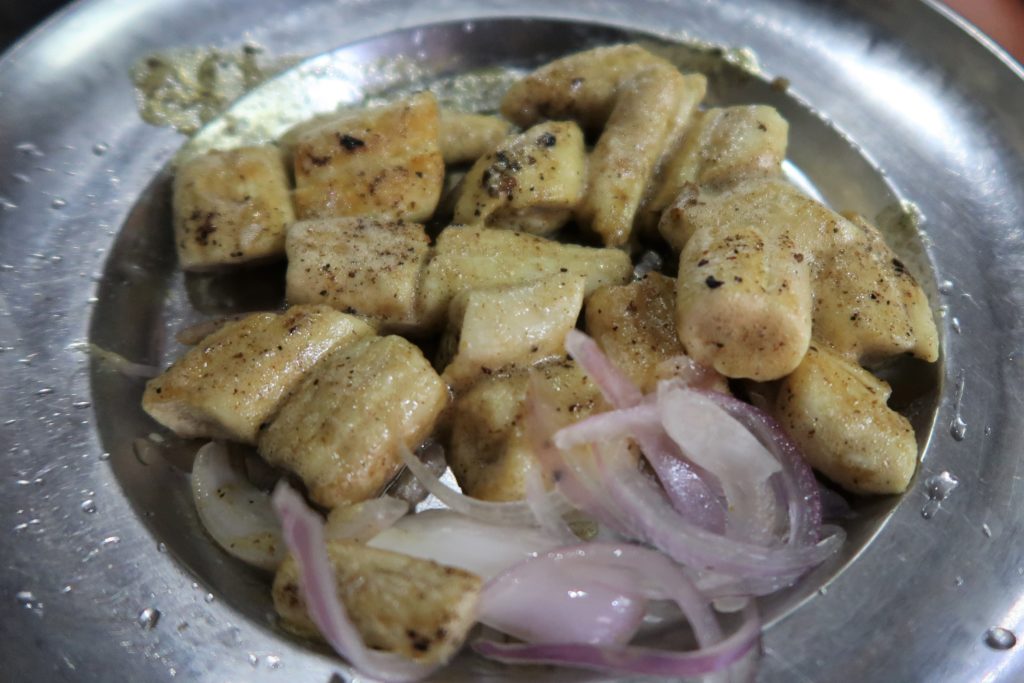 他のお客さんが頼まれていたものに、サフーミチャ Safu Micha(サプーミチャ Sapoo Mhicha) がありました。胃の一部ハチノスなどを袋状にして、骨髄を詰めて包んだものです。
他のお客さんが頼まれていたものに、サフーミチャ Safu Micha(サプーミチャ Sapoo Mhicha) がありました。胃の一部ハチノスなどを袋状にして、骨髄を詰めて包んだものです。 ミンチにした肉を焼くだけのものも美味しそうでした。
ミンチにした肉を焼くだけのものも美味しそうでした。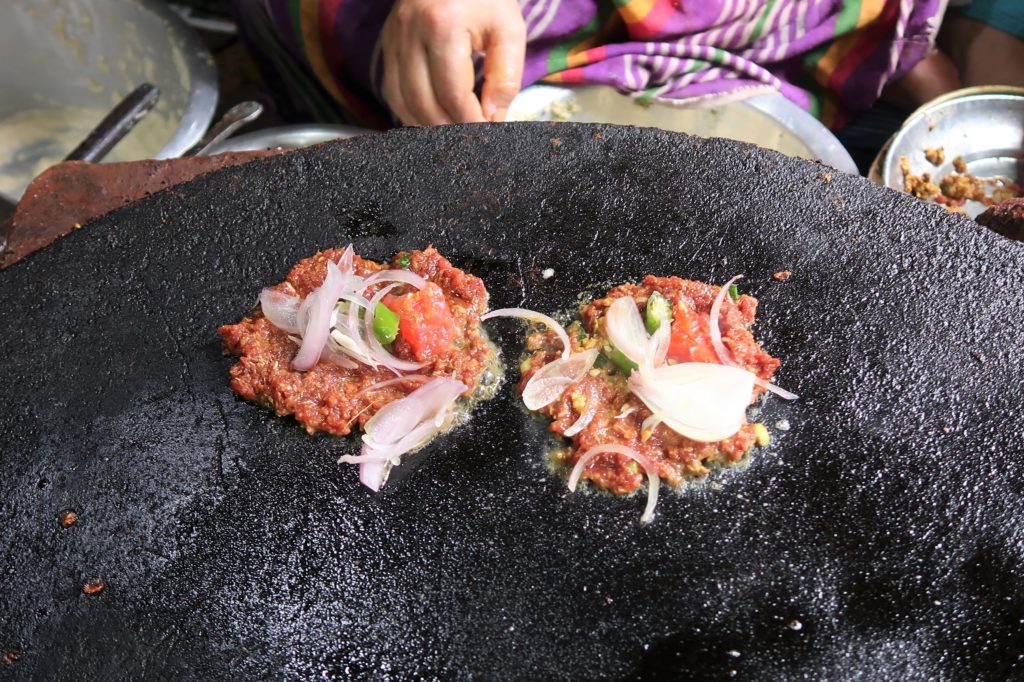 Honochaさんは2店あるようで、
Honochaさんは2店あるようで、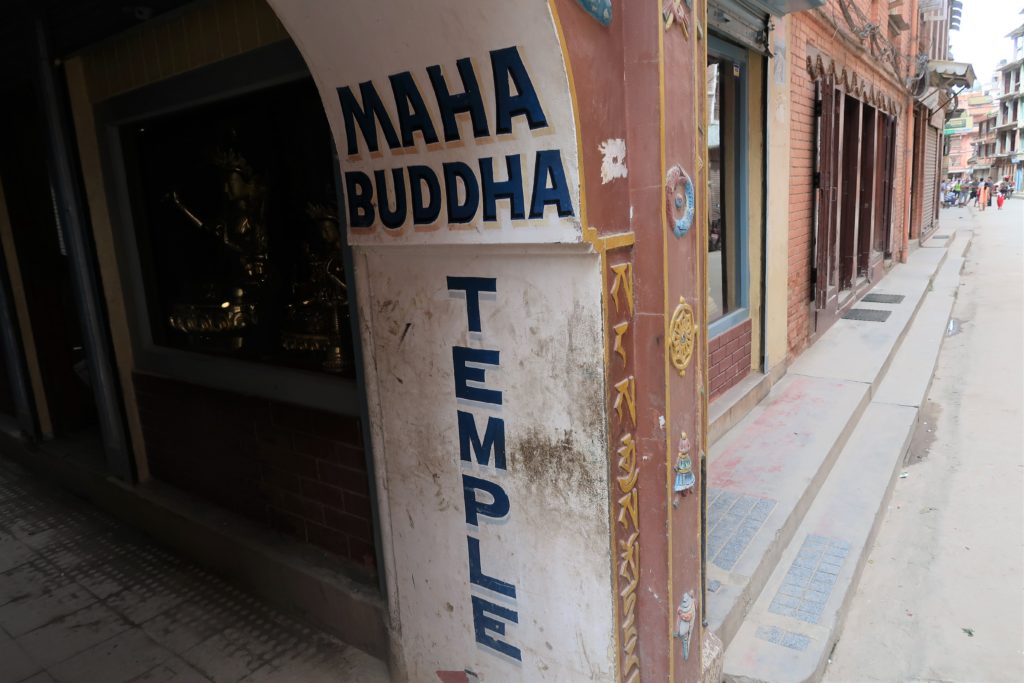 入場料を支払います。
入場料を支払います。 震災の影響でまだ修復中でした。
震災の影響でまだ修復中でした。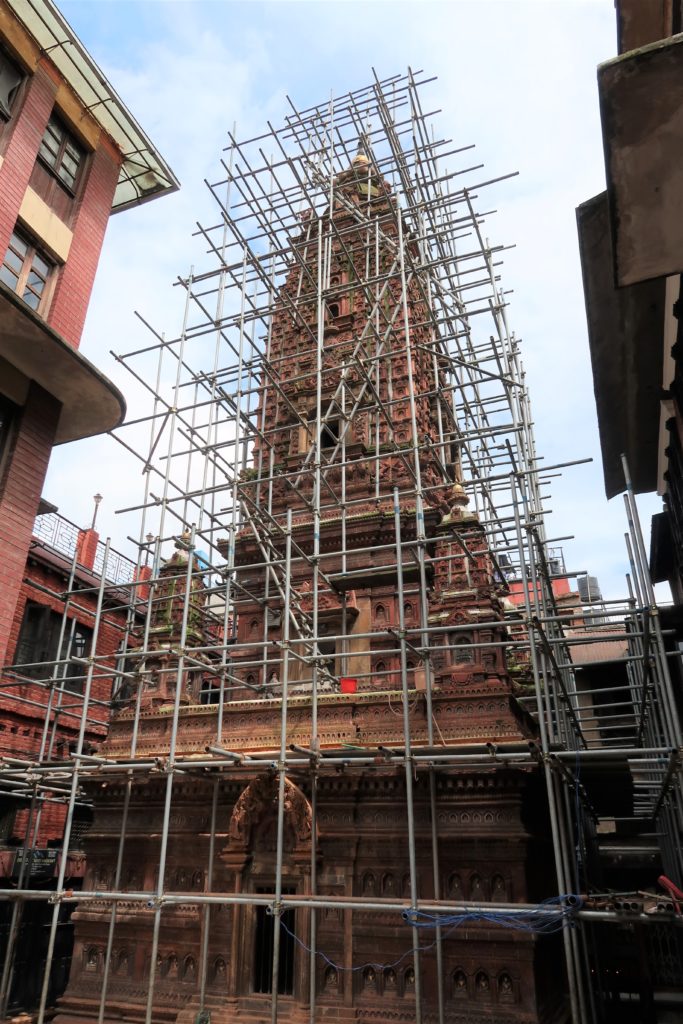 ご本尊は金色です。
ご本尊は金色です。 あまり記憶にないのですが、撮った写真を見ると31年前にも訪れていました。
あまり記憶にないのですが、撮った写真を見ると31年前にも訪れていました。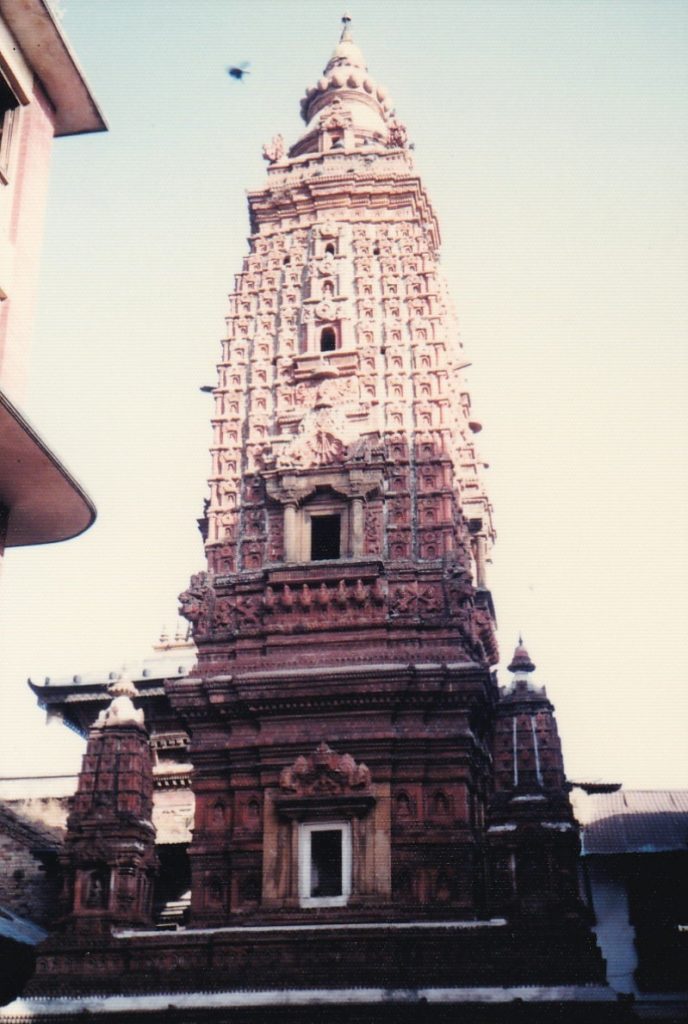
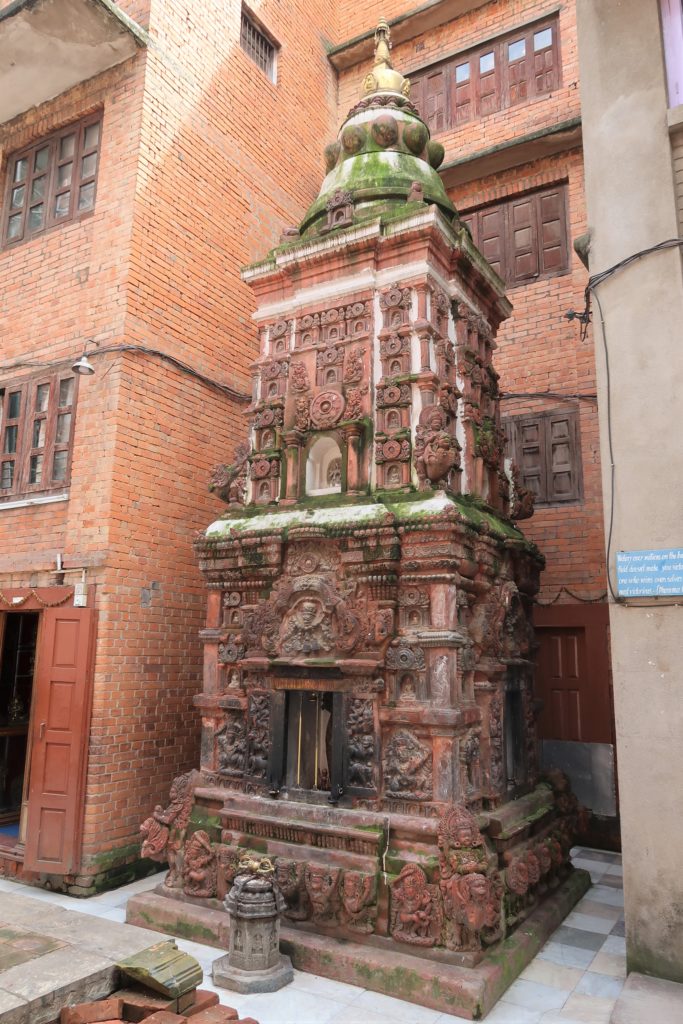
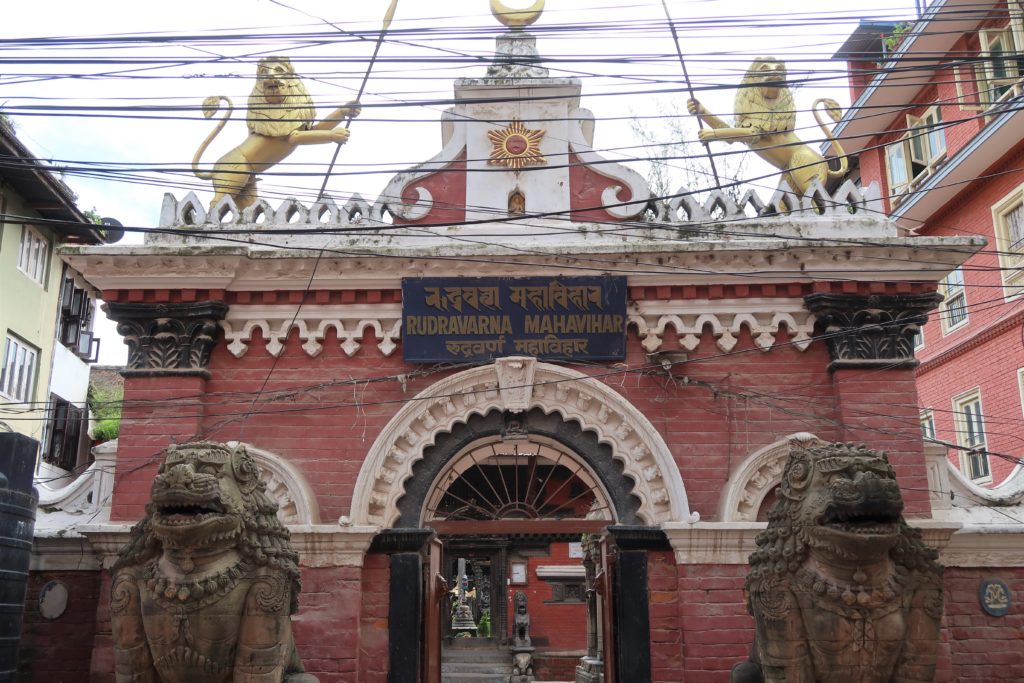
 確かに the Golden Temple よりも参拝者が少なく静かな境内は、ゆっくりとした時間が流れています。
確かに the Golden Temple よりも参拝者が少なく静かな境内は、ゆっくりとした時間が流れています。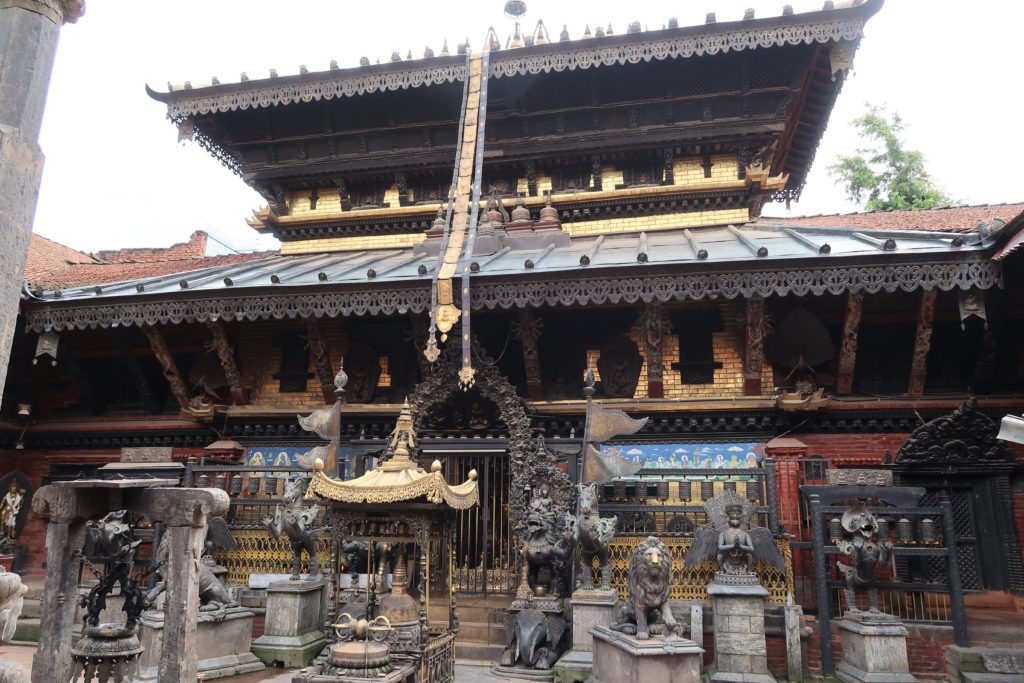

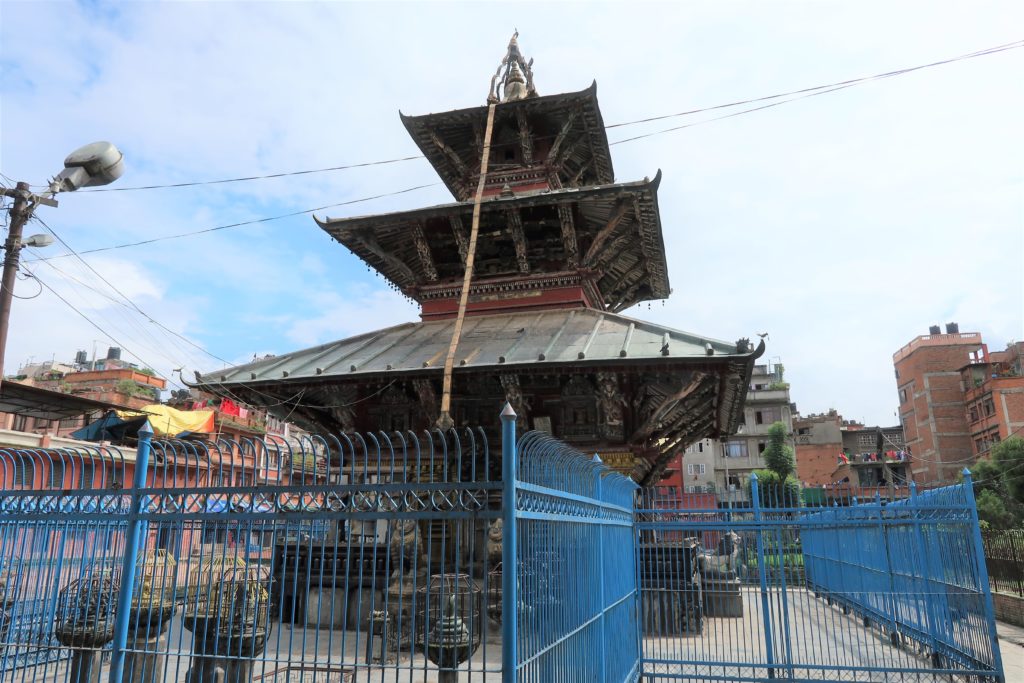 柵で囲まれ、もっと近くで見れないのが残念ですが、
柵で囲まれ、もっと近くで見れないのが残念ですが、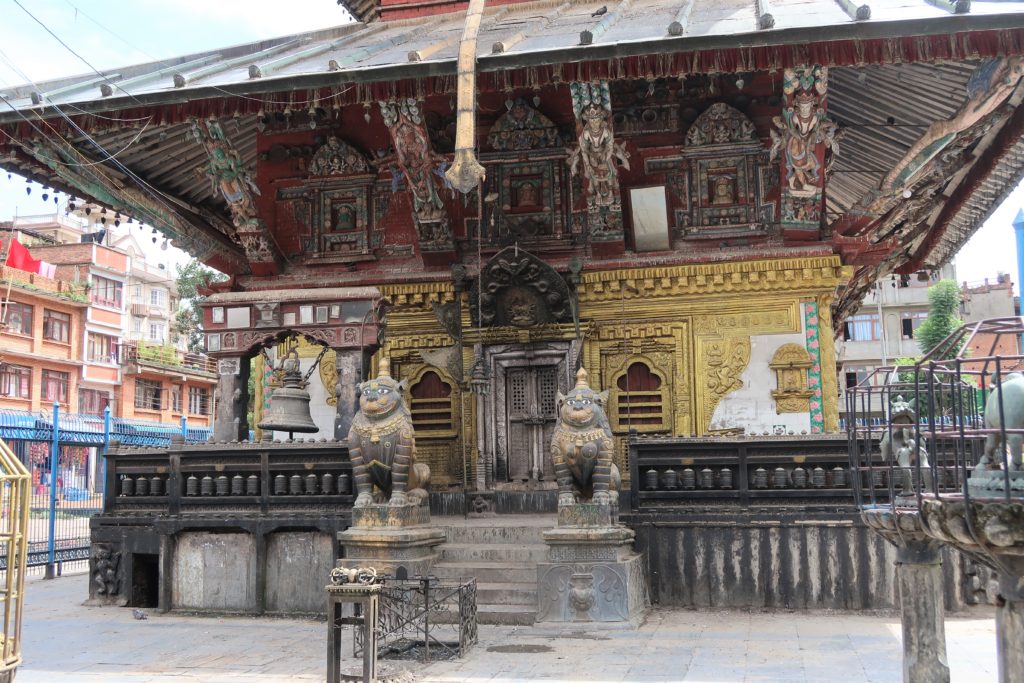
 是非ともお祭りも見てみたいものです。詳細が
是非ともお祭りも見てみたいものです。詳細が 
 寺院としての建築様式も、カトマンズやパタンのマチェンドラナート寺院とよく似ています。
寺院としての建築様式も、カトマンズやパタンのマチェンドラナート寺院とよく似ています。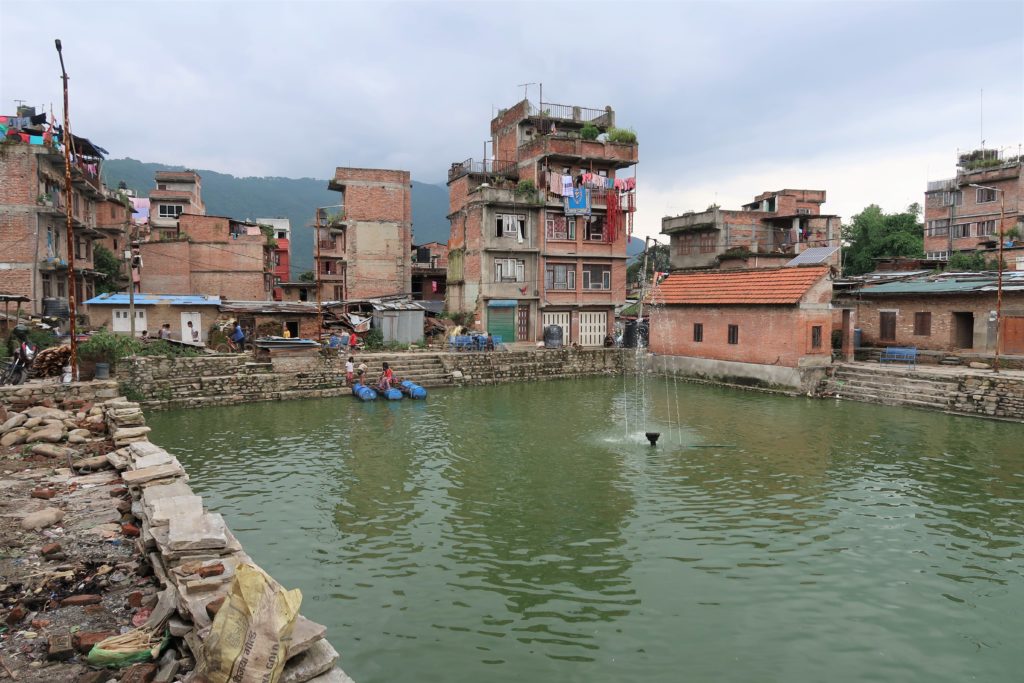 寺の入り口は比較的保たれている様ですが、
寺の入り口は比較的保たれている様ですが、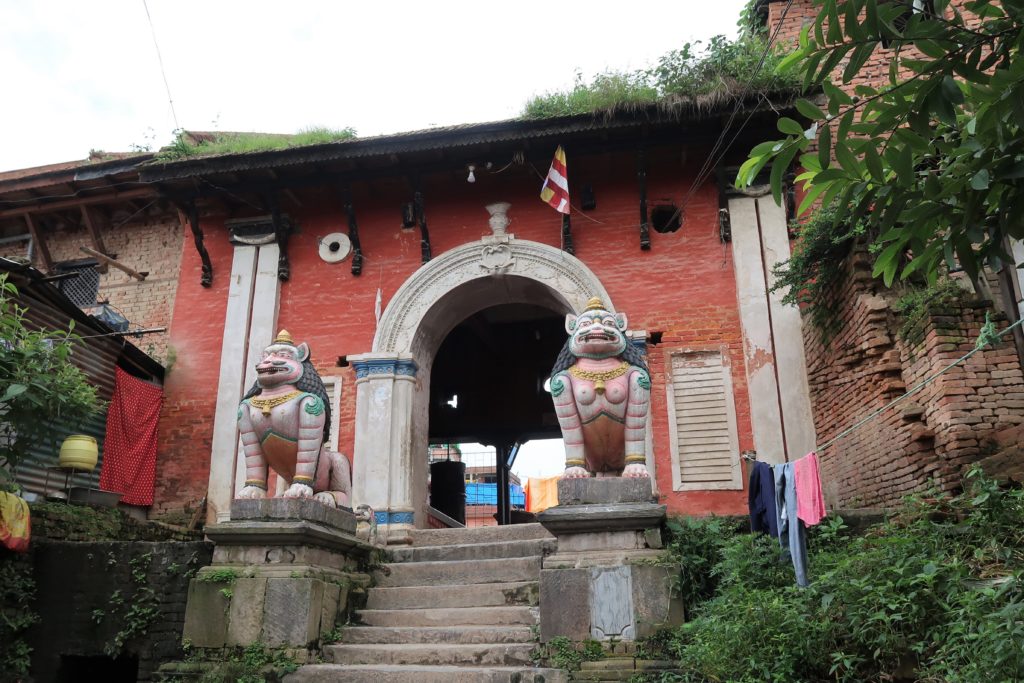 そこにあったはずの、シカラ Shikara 様式の美しい寺院は跡形もなく崩れ落ち、ようやく基壇が姿を現したばかりの様でした。
そこにあったはずの、シカラ Shikara 様式の美しい寺院は跡形もなく崩れ落ち、ようやく基壇が姿を現したばかりの様でした。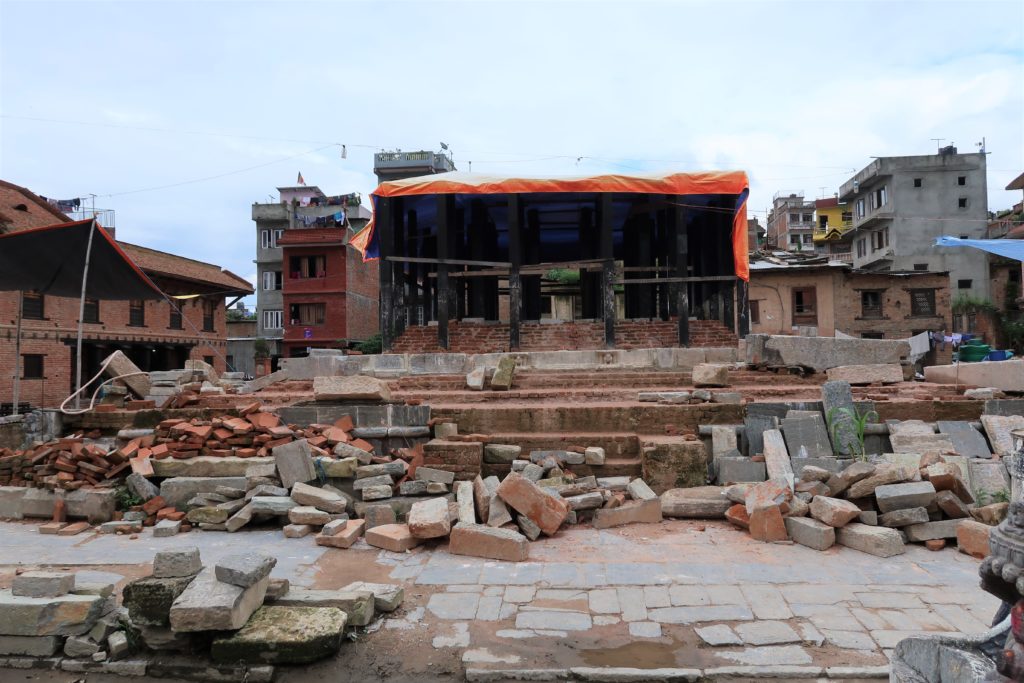
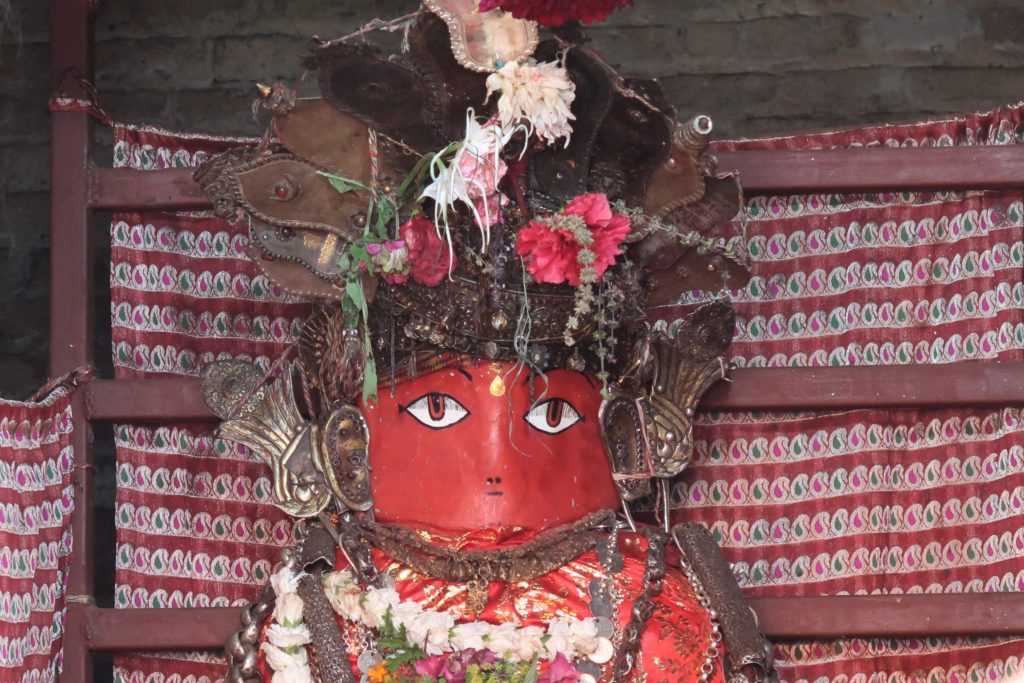 震災直後の2015年5月1日、The Kathmandu Post は
震災直後の2015年5月1日、The Kathmandu Post は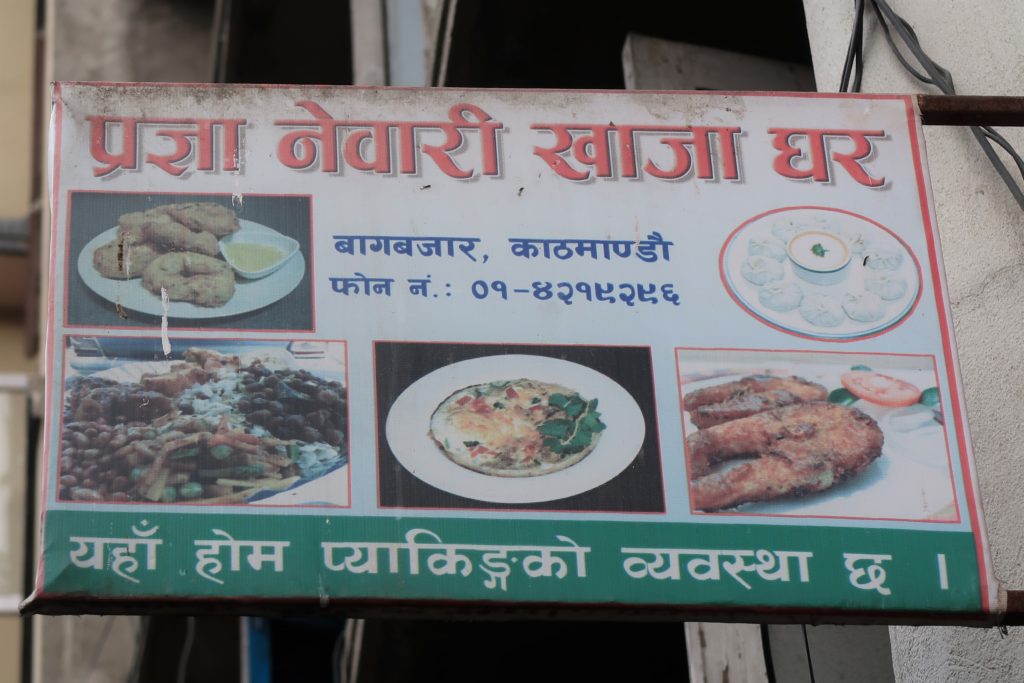 お店に入るとメニューボードも目に入りますが、
お店に入るとメニューボードも目に入りますが、 並んでいるものを見せてもらいます。
並んでいるものを見せてもらいます。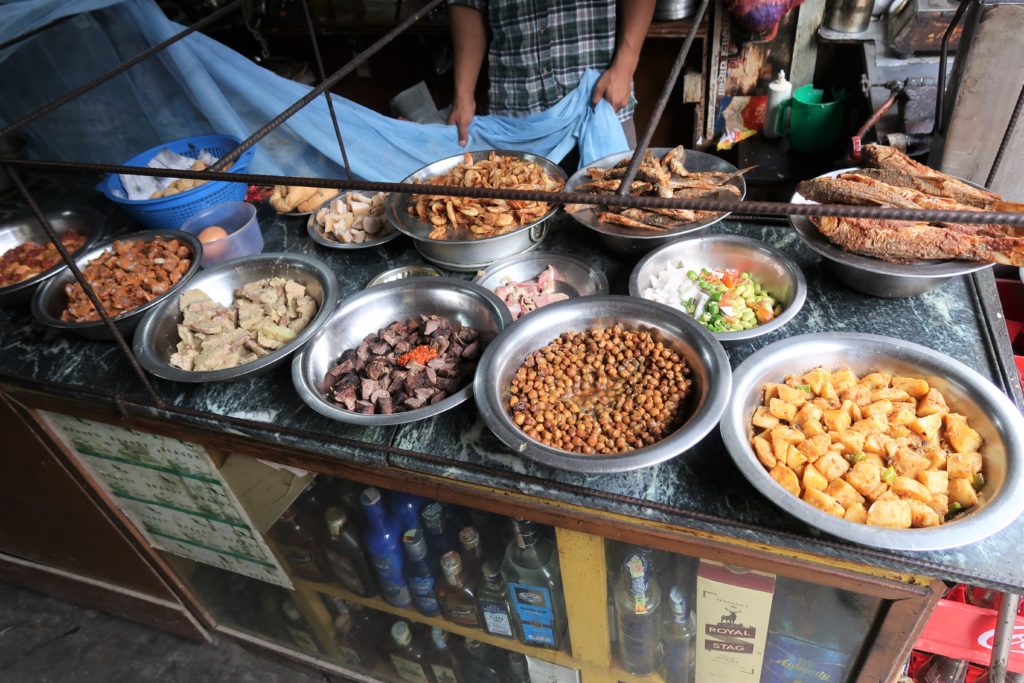 魚 マチャ Maacha も並んでいます。
魚 マチャ Maacha も並んでいます。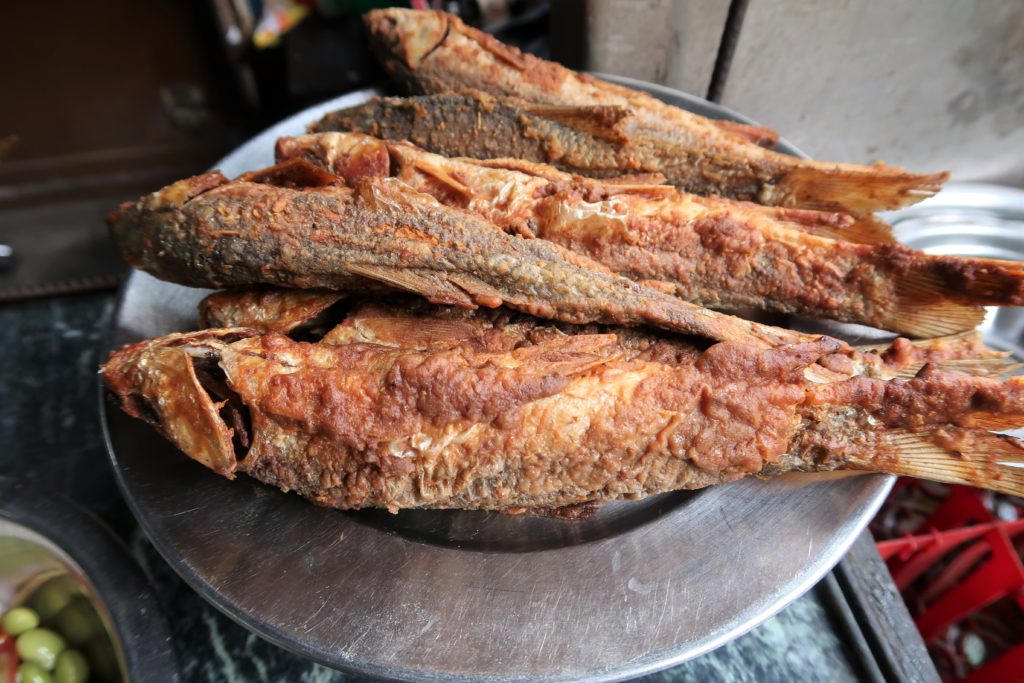
 生肉のカチラ Kachila も頂く事が出来るようです。
生肉のカチラ Kachila も頂く事が出来るようです。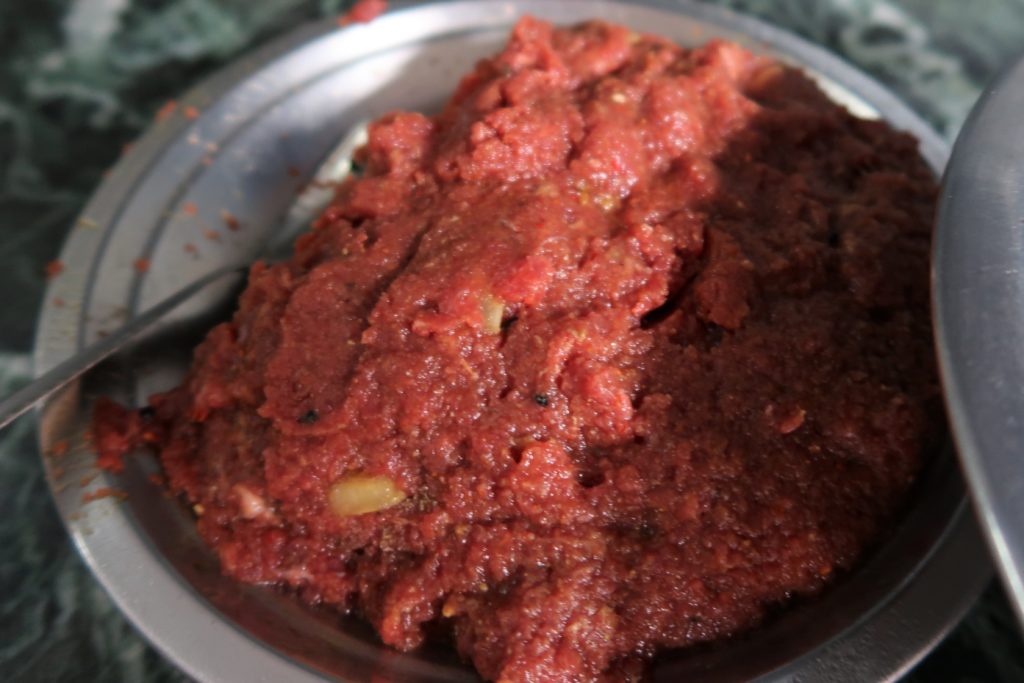 他にも美味しそうな食材の数々がありましたが、
他にも美味しそうな食材の数々がありましたが、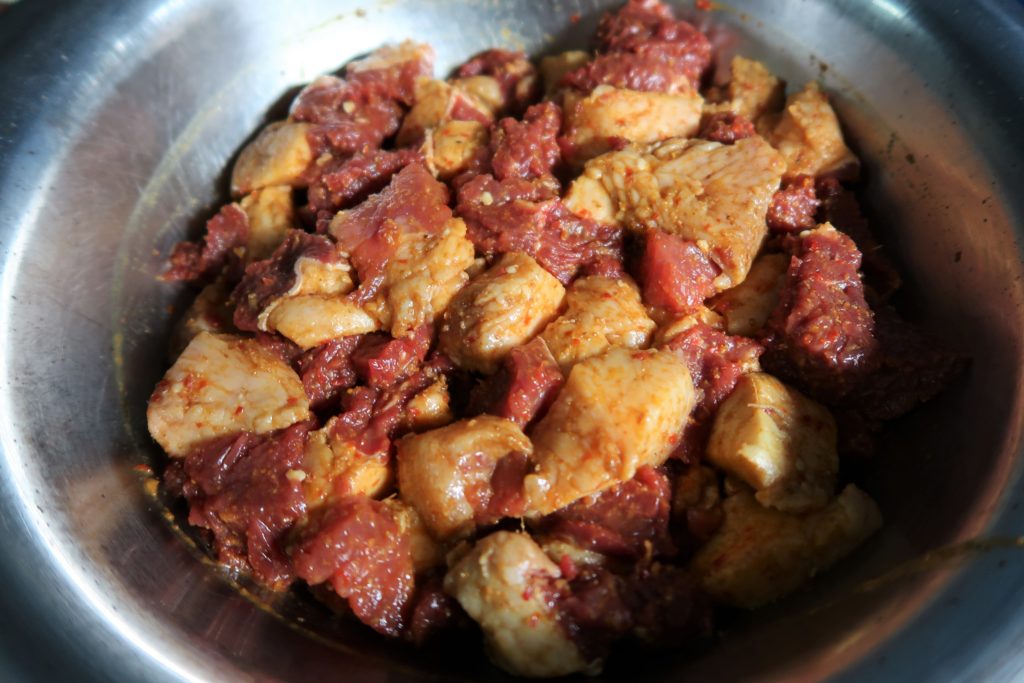
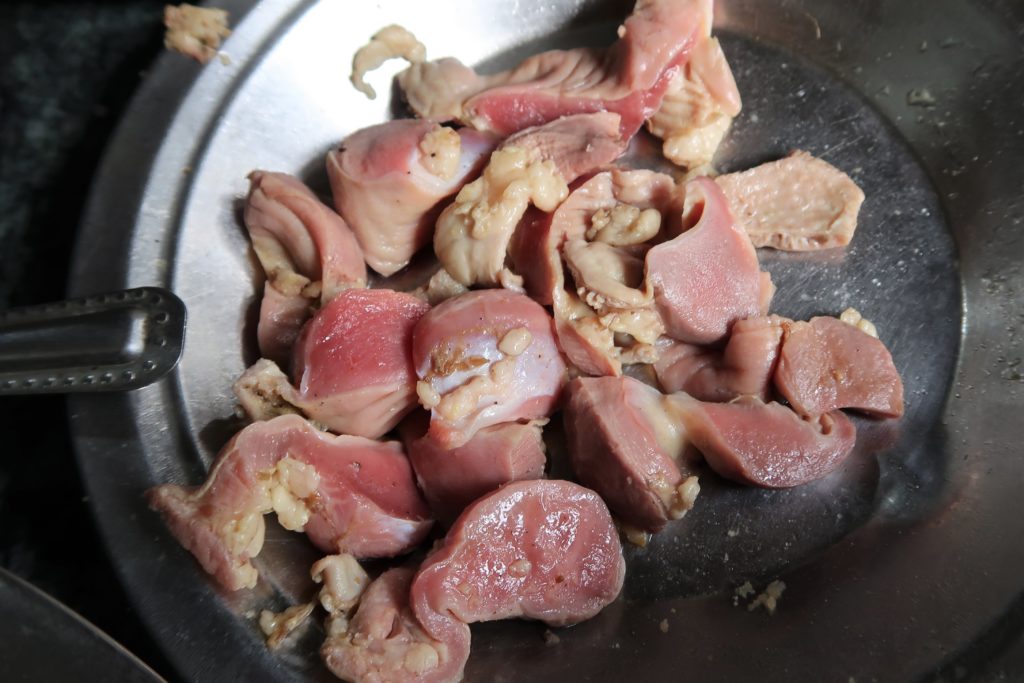 遅い昼の軽食、まさしくカジャとして、まずは軟骨 クルクレ Kurkure を、
遅い昼の軽食、まさしくカジャとして、まずは軟骨 クルクレ Kurkure を、 次いで、肺 フォクソ Fokso を、
次いで、肺 フォクソ Fokso を、 更に、胃 カゴ Khago もお願いしました。
更に、胃 カゴ Khago もお願いしました。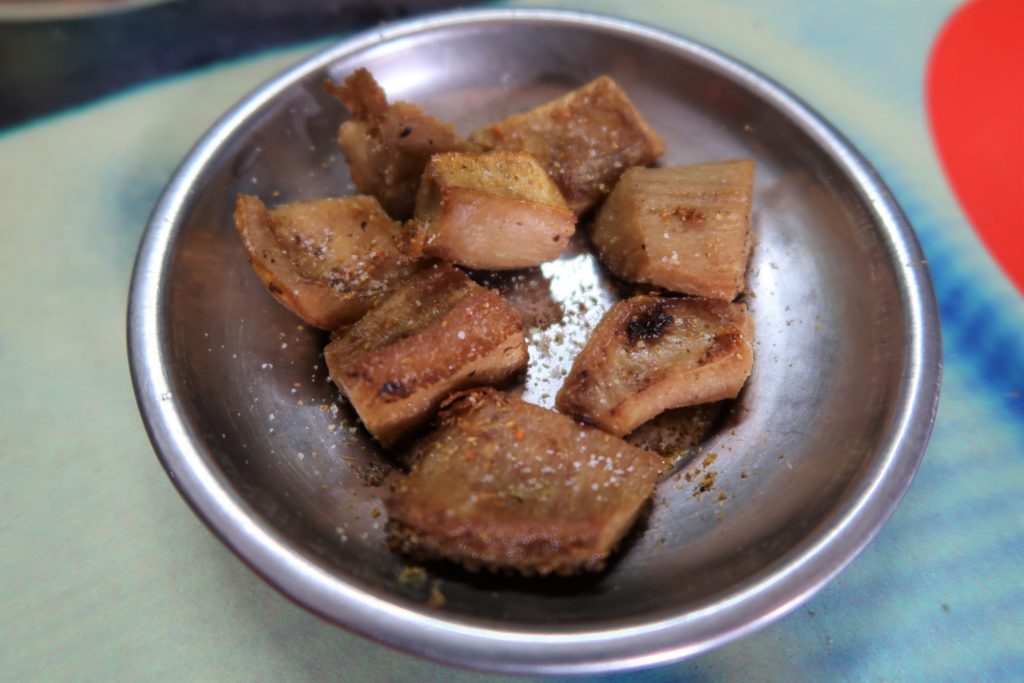 Google Mapでは、ネパールの細かな路地の詳細は表しません。このお店の位置を確認しようとすると、Pragya Newari Hotel という店が表記され、電話番号も同じです。その位置が正しいのか分かりません。
Google Mapでは、ネパールの細かな路地の詳細は表しません。このお店の位置を確認しようとすると、Pragya Newari Hotel という店が表記され、電話番号も同じです。その位置が正しいのか分かりません。
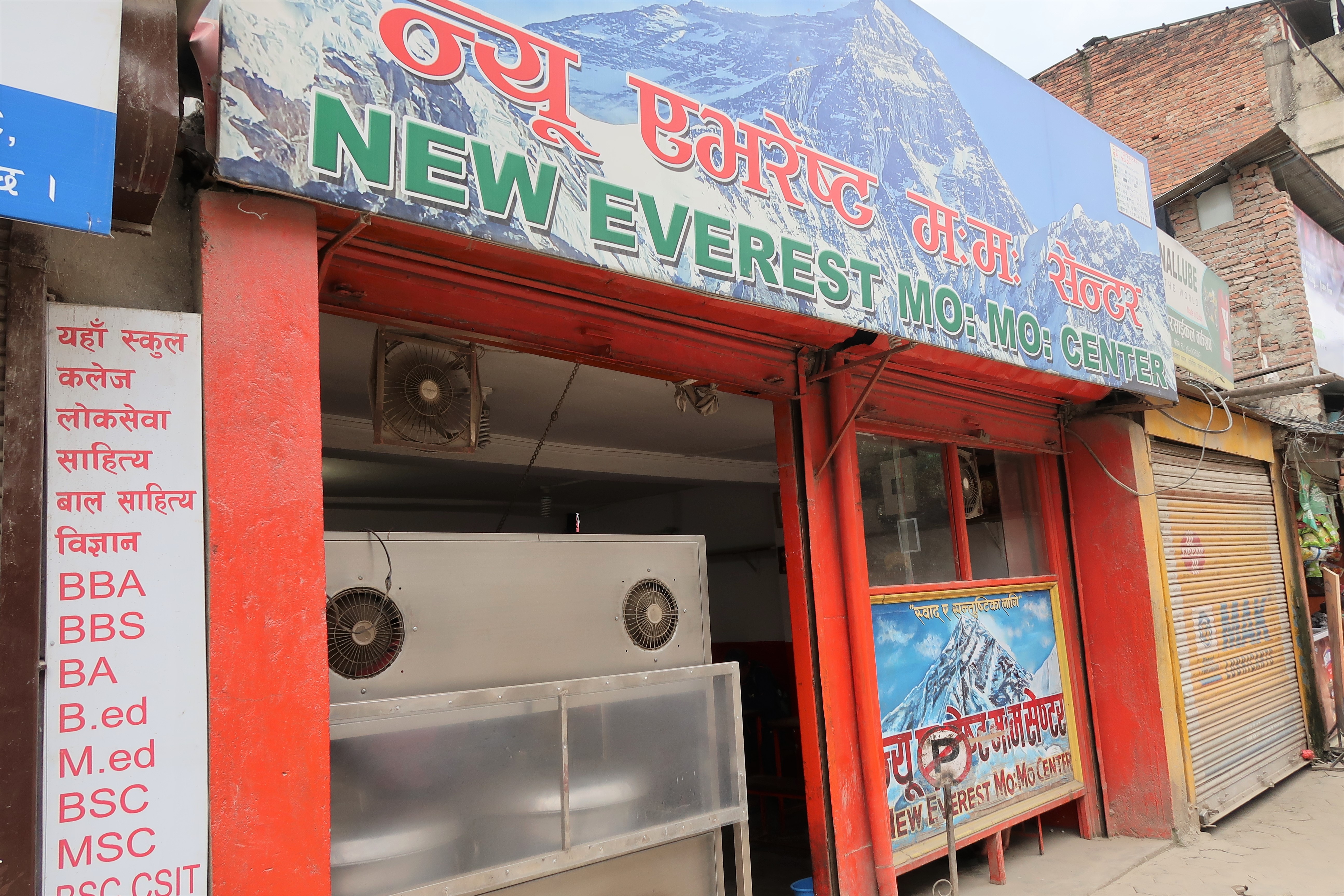 モモは10個入りか、ハーフの5個入りかを選び、前金で支払います。夕方の中途半端な時間にも関わらず、次から次へとお客さんがやってきます。店内は混んでおり、相席は必然です。皆さっと食べてさっと立ち去りますので、回転はとてもはやそうです。ネパールの人達の食べ方を見ていると、必ずモモが浸っているスープ?アチャール?の追加をお願いしています。テーブルの上には、水差しは有りますが、コップは有りません。上を向いて口をを開け、器用に水差しから水を流し込んで飲んでいます。ハーフを頼んだのに10個入りが来てしまいました。結構な量です。
モモは10個入りか、ハーフの5個入りかを選び、前金で支払います。夕方の中途半端な時間にも関わらず、次から次へとお客さんがやってきます。店内は混んでおり、相席は必然です。皆さっと食べてさっと立ち去りますので、回転はとてもはやそうです。ネパールの人達の食べ方を見ていると、必ずモモが浸っているスープ?アチャール?の追加をお願いしています。テーブルの上には、水差しは有りますが、コップは有りません。上を向いて口をを開け、器用に水差しから水を流し込んで飲んでいます。ハーフを頼んだのに10個入りが来てしまいました。結構な量です。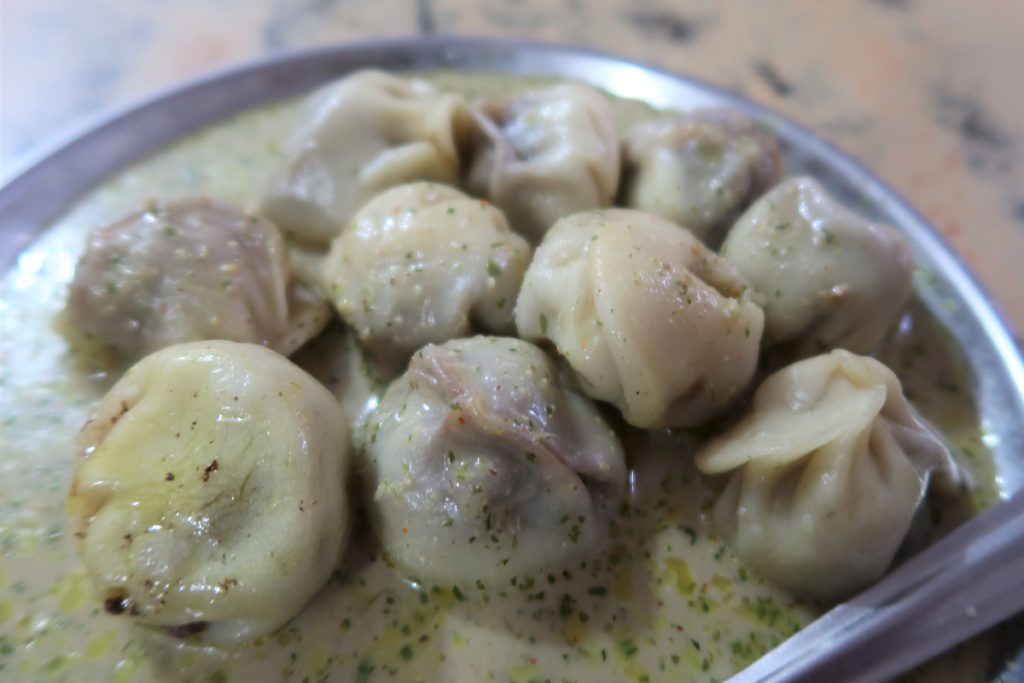
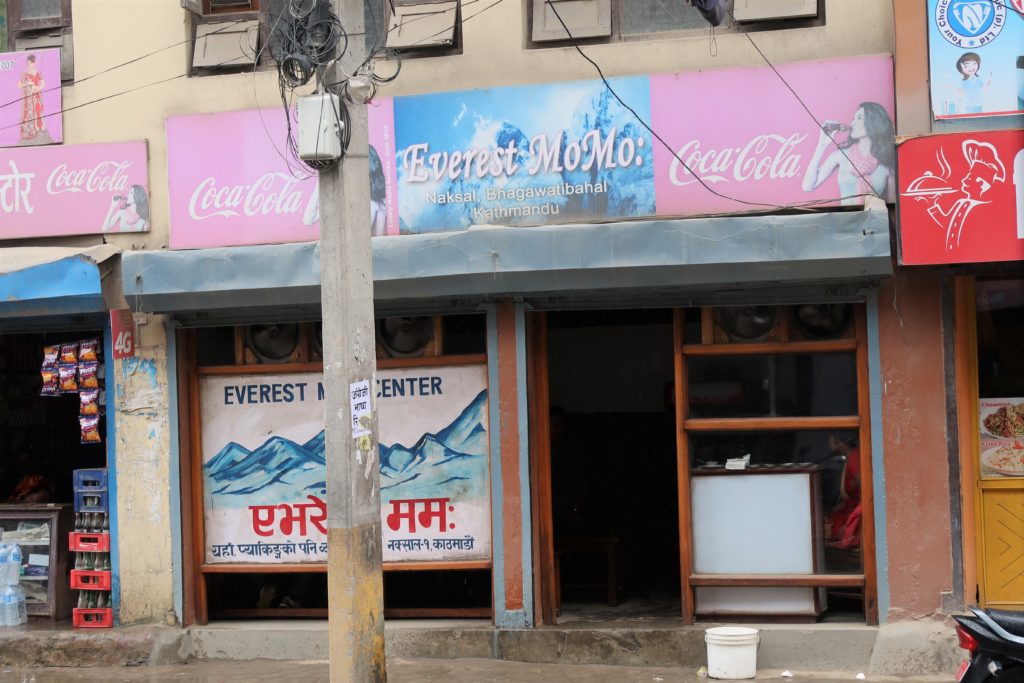
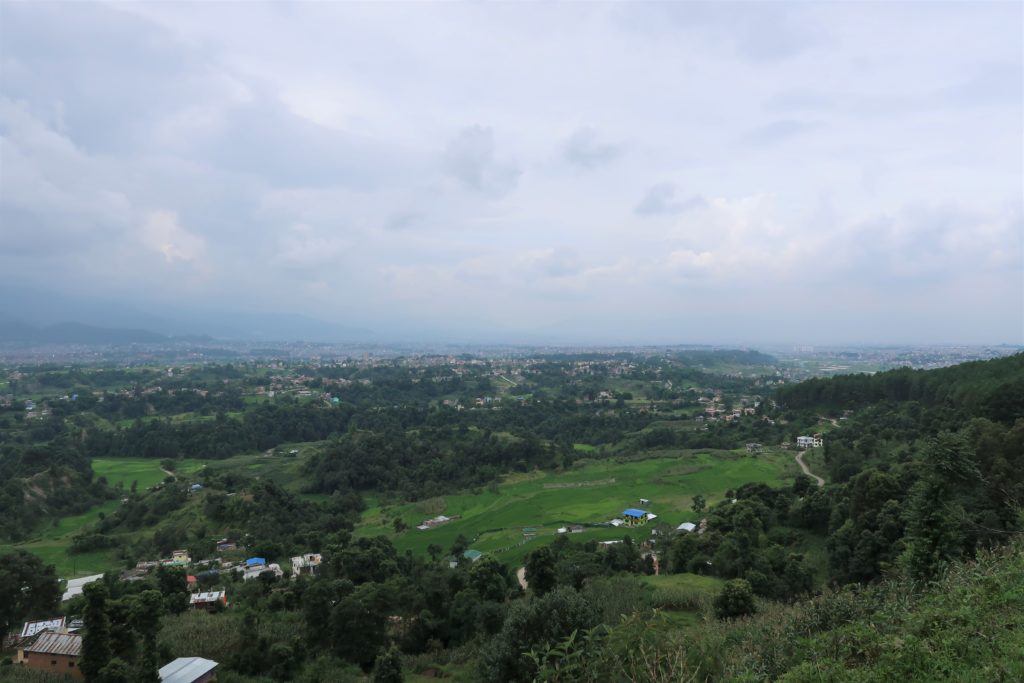 外国人は入場料を支払います。
外国人は入場料を支払います。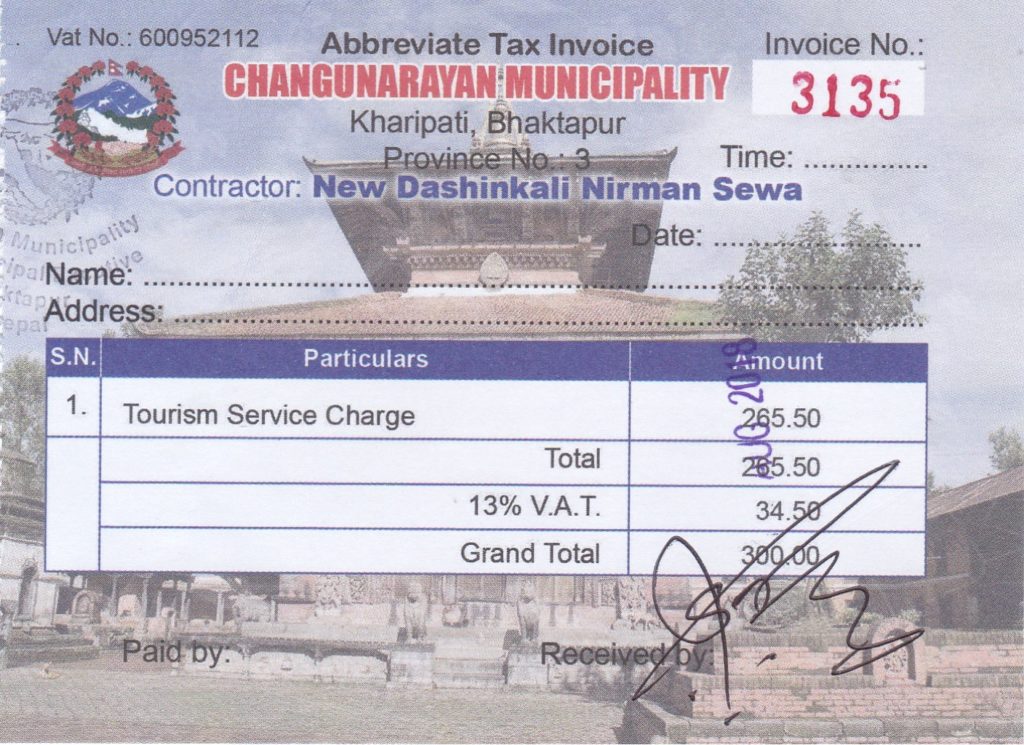 寺院は地震による倒壊は免れ、美しい姿を見ることが出来ます。
寺院は地震による倒壊は免れ、美しい姿を見ることが出来ます。 2層の建物は、屋根の先端の黄金色の Gajura ガジュラ(ガジュール)、そこから垂れ下がるPataka パタカ(Dhvaju ドバジャ)、屋根を支える方丈 Struts(Tundal トゥンダール)の美しい彫刻と、Pagoda style パゴダ様式の建築物の代表の一つです。
2層の建物は、屋根の先端の黄金色の Gajura ガジュラ(ガジュール)、そこから垂れ下がるPataka パタカ(Dhvaju ドバジャ)、屋根を支える方丈 Struts(Tundal トゥンダール)の美しい彫刻と、Pagoda style パゴダ様式の建築物の代表の一つです。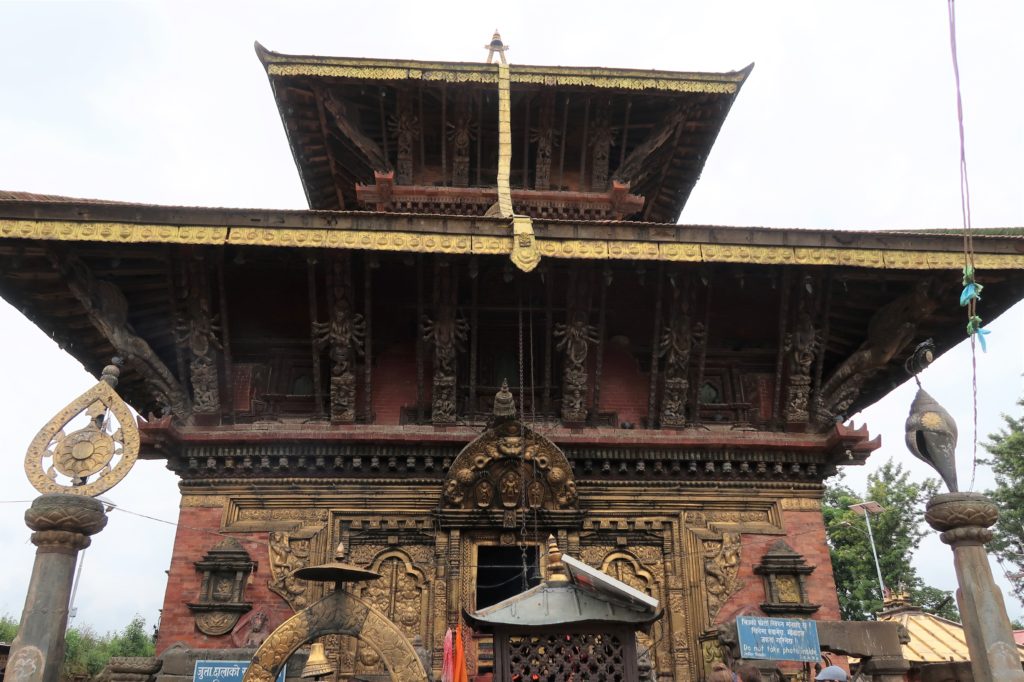
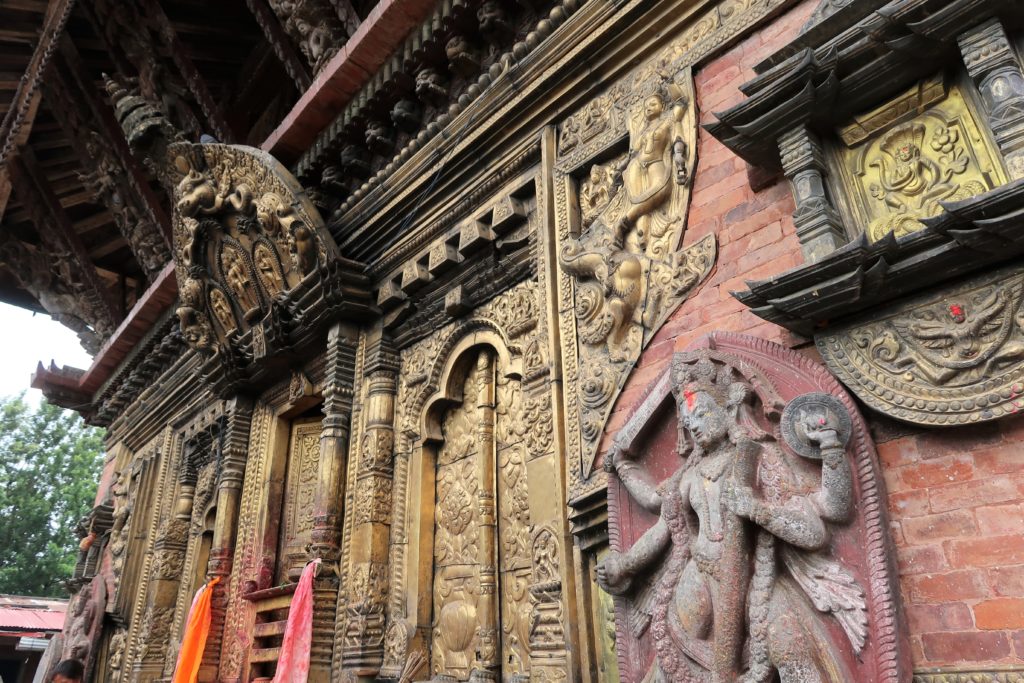 Torana トーラナも金色です。
Torana トーラナも金色です。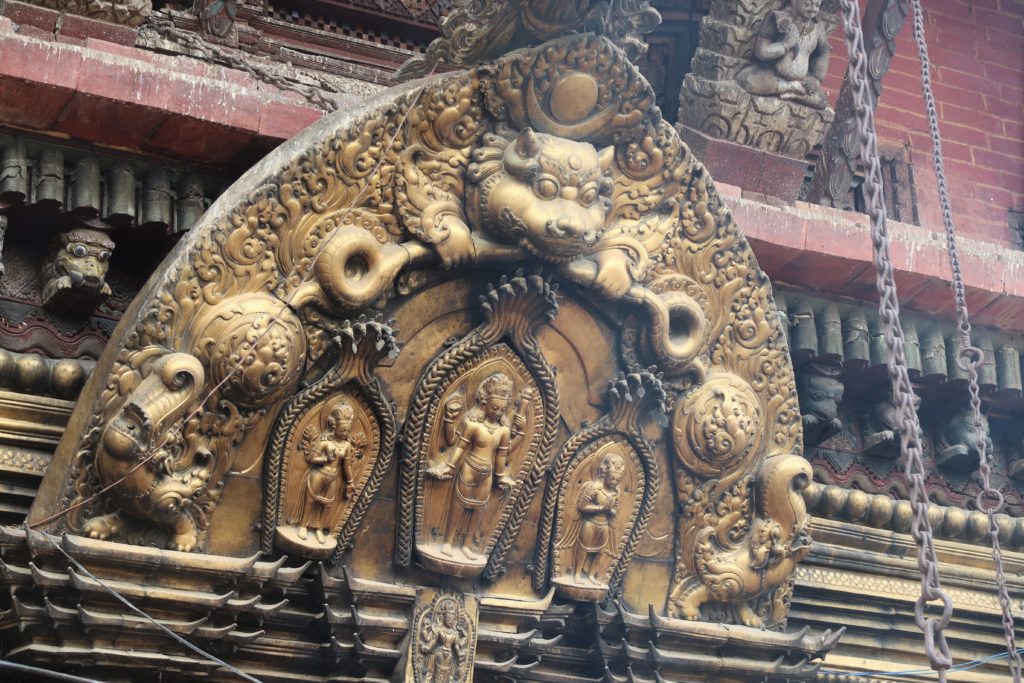 この地域ではこんなに大きな米が収穫できるという、伝説の米粒も側面に見つけることが出来ます。鳩がとまっています。
この地域ではこんなに大きな米が収穫できるという、伝説の米粒も側面に見つけることが出来ます。鳩がとまっています。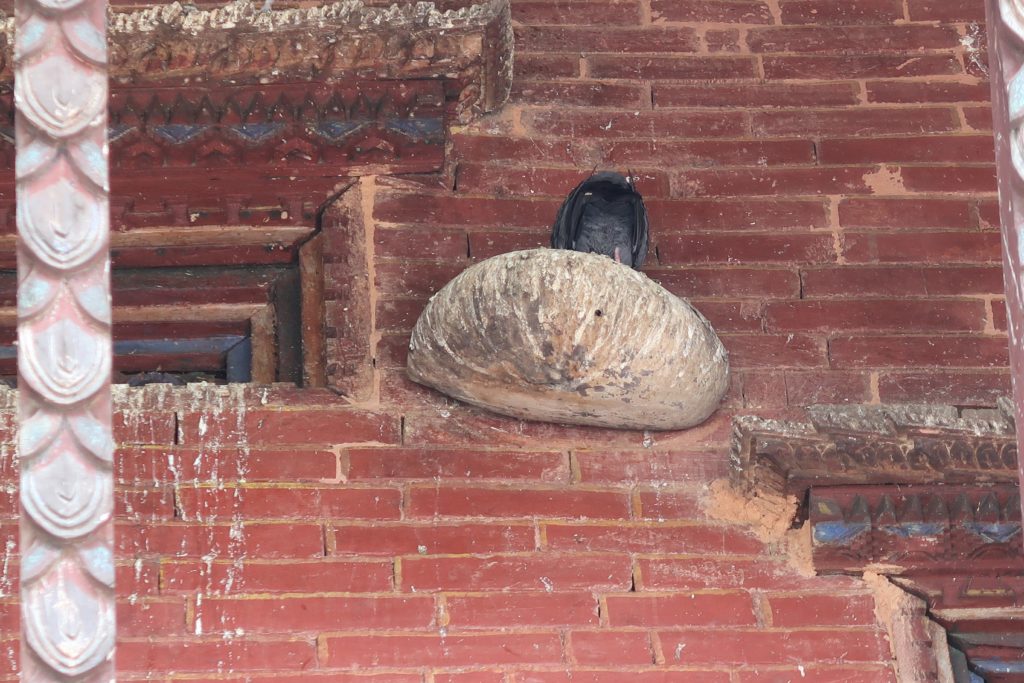 正面にはガルーダ Garuda が跪いています。
正面にはガルーダ Garuda が跪いています。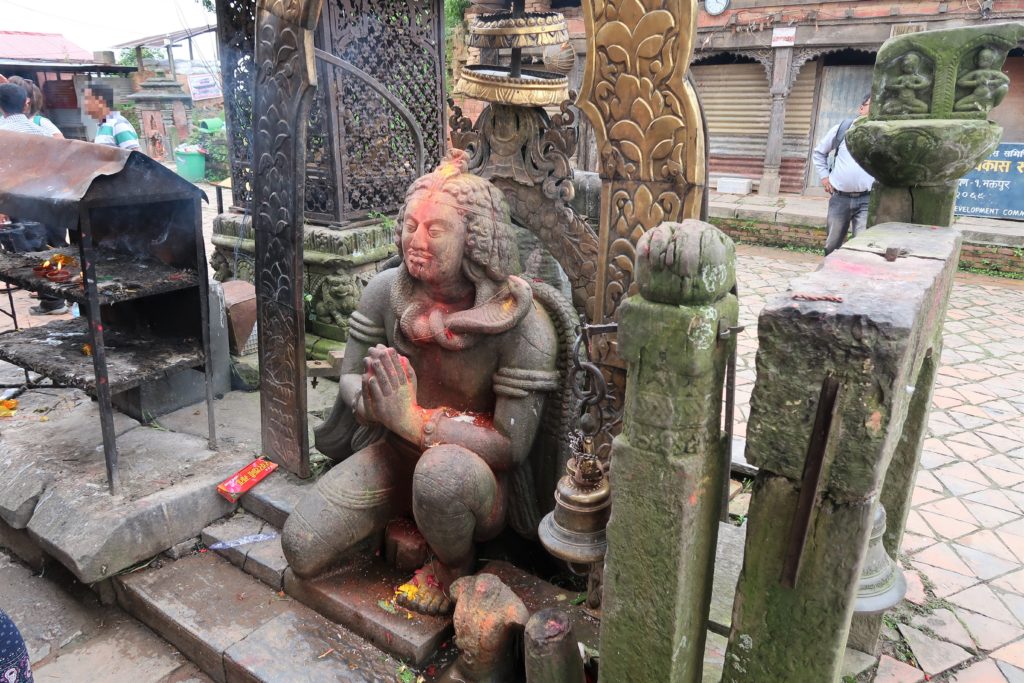
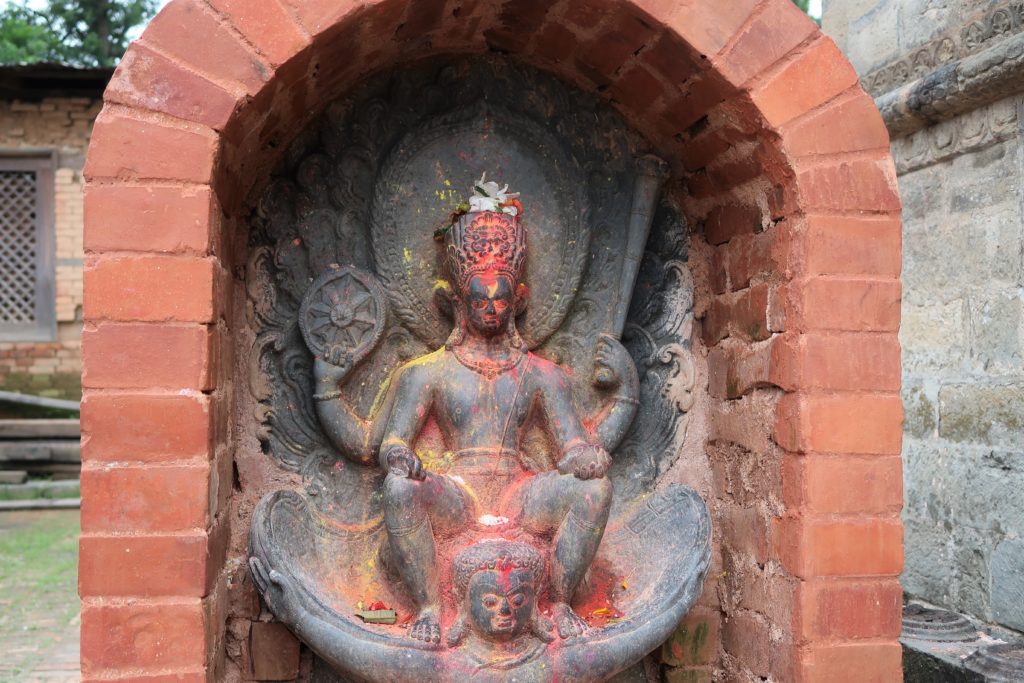
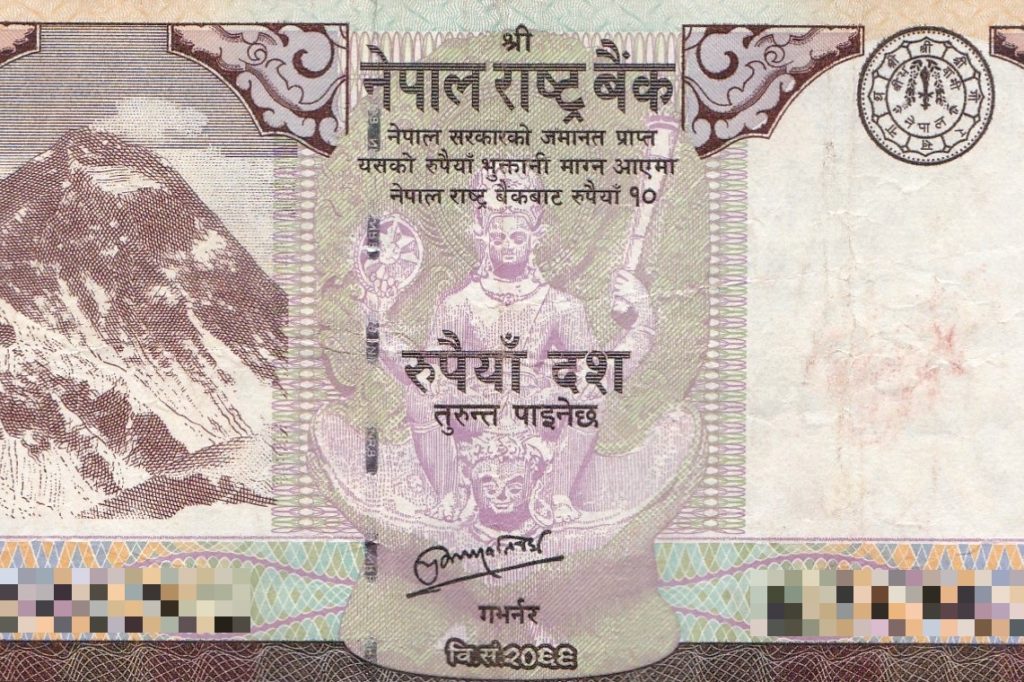 10の頭と10本の手を持つヴィシュヌ像は、ムガール帝国の侵略の際に割られて一部欠けたとの話も聞きます。
10の頭と10本の手を持つヴィシュヌ像は、ムガール帝国の侵略の際に割られて一部欠けたとの話も聞きます。 ネパールで最も古い石碑は464年頃の物との事ですが、刻まれた文字は現代の人には読めないそうです。
ネパールで最も古い石碑は464年頃の物との事ですが、刻まれた文字は現代の人には読めないそうです。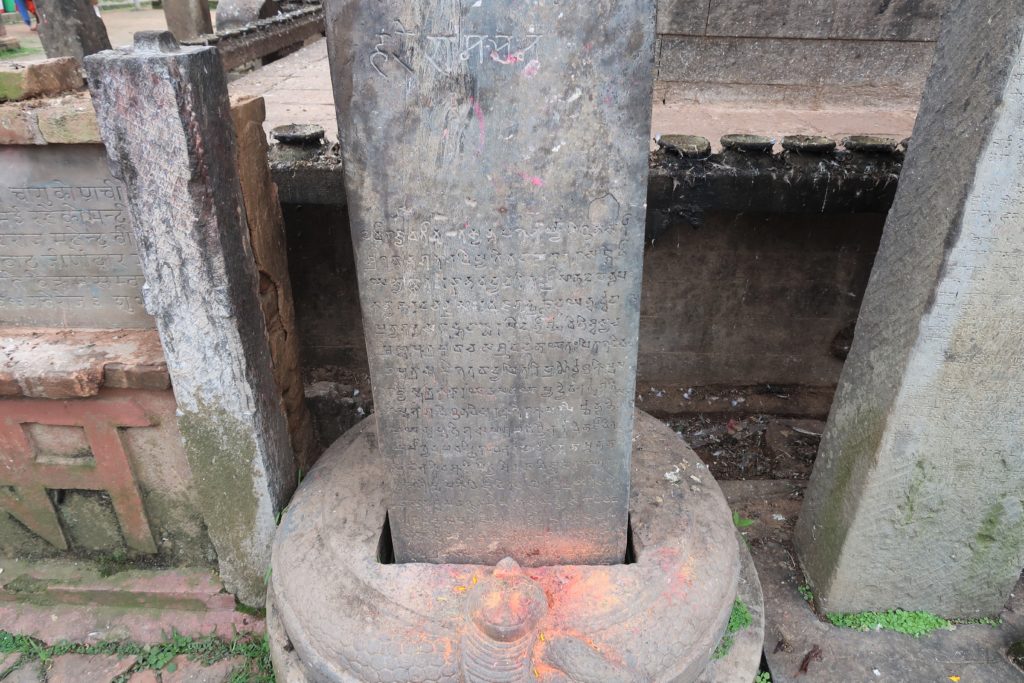 UNESCOが、この
UNESCOが、この